HISTORIC UNIONIZATION ELECTION AT PEET’S COFFEE LOCATIONS IN DOWNTOWN AND NORTH DAVIS
know
17 and 20
BY ANTHONY W. ZAMMIKIEL city@theaggie.org
On Nov. 29, the Peet’s Coffee locations in Downtown and North Davis announced in a joint press release that the cafes have filed a motion with the National Labor Relations Board (NLRB) to schedule an election to decide whether the employees at each location are to unionize.
According to the official press release, “Workers are joining a growing wave of unionization at coffee chains across the country, following the precedent set by workers at coffee companies like Colectivo Coffee, Starbucks, and Spot Coffee. Peet’s workers are filing their locations with Workers United-SEIU, the same union that represents Spot Coffee and the Starbucks Workers United campaign. Workers cited being inspired by organizing Starbucks workers as a key motivation for their organizing efforts.”
The press release continues, “There are 208 corporate Peet’s locations in the United States, with a vast majority of the stores located in the state of California. If successful, the North Davis and Downtown Davis locations will be the first corporate Peet’s cafes to successfully unionize.”

Schroedter Kinman, Alyx Land, Trinity Salazar and Molly Green, the leading organizers of the filing by two Peet’s Coffee locations, explained that there are multiple reasons why the employees at each location are organizing for union representation; however, the primary reasons are their desires for better pay and scheduling practices.
“You’re onboarded at minimum wage, and after a month or so of training you’re promoted to barista, which is paid 50 cents above minimum wage,” Kinman explained. “The work we do as baristas — taking orders, preparing food and drinks, filling bean orders, cleaning equipment with special chemicals, keeping the store clean and up to health standards, acting as de facto IT specialists when people have trouble with our mobile app, de-escalating the few customers who are unruly, all while having proficient knowledge in the coffee
roasting process and basic flavor profiles of coffee blends — it deserves more than $15.50 an hour, especially when places like McDonald’s and InN-Out are now offering starting wages at $17.”
Kinman said that employees desire an increase of labor hours as well, sharing that ongoing national inflation rates have caused an 8% decrease in wages over the previous year and that employees need more labor hours to continue being able to afford basic necessities.
“We’re also so short-staffed, so if


UC DAVIS SCHOOL OF LAW WITHDRAWS FROM US NEWS AND WORLD REPORT RANKINGS
more than a couple of people come down with a cold, we can end up shutting down the whole store because we just do not have the people to stay open,” Kinman shared. “Some readers might remember when we had to shut down [the Downtown Davis location] last month for half of finals week. That was all because a cold was going around and not enough people were available to keep the store open. Those of us who were working those short-staffed days were worked to the bone and received no compensation for doing the work of multiple people
in a shift.”
According to Kinman, managers operating at both Peet’s Coffee Davis locations have employed various tactics to discourage unionization activities, like “suddenly promising to revamp the [human resources] HR system so we can get better pay and benefits without a union, sowing fear of unions with personal anecdotes of bad experiences with them, bringing in higher-ups from corporate to watch us while we work and talk to employees one-onone about the dangers of unionizing, promising they can change, etc..,” Kinman said. “Higher-ups have even taken employees out to eat on their dime to talk about their concerns of unionizing.”
The unionization elections have been scheduled for Jan. 17th and Jan. 20th. The leading organizers at both Peet’s Coffee locations in the city of Davis asked that supportive community members support their efforts by fostering community engagement.
“Come in, order something cheap and easy like a drip coffee or iced tea, tell us how stoked you are to hear we’re unionizing and leave a tip if you’re able,” the organizers said. “It will show your support, keep the store profitable so we don’t get shut down and put a little extra money in our pockets to help fight inflation. Another thing folks can do to support is DM a solidarity statement to @peetsunited on Instagram. We’ve been posting anonymous support for the union, and we’d love to hear more from the community about why they love Peet’s and how much they want to see us unionize.”
UC DAVIS PROFESSOR DISPUTES CLAIMS THAT FUNDING FROM THE LIVESTOCK INDUSTRY BIASES HIS RESEARCH ON METHANE EMISSIONS
BY SYDNEY AMESTOY campus@theaggie.org
The UC Davis School of Law will no longer submit data such as postgraduation employment rates and LSAT scores to the U.S. News and World Report’s annual law school ranking, according to a letter from Dean Kevin Johnson issued Nov. 28.
Three other UC law schools, including those at UC Berkeley, UC Los Angeles and UC Irvine have also announced decisions to stop providing data for use in the rankings, according to an article on law.com, along with the law schools at Harvard, Yale, Stanford and Columbia, among others. Cornell Law School and University of Chicago Law School have decided to continue to provide data for the rankings.
Johnson’s letter cited concerns about the rankings not involving diversity in their methodology, as well
as a preference towards private schools with more resources.
“We really were frustrated that the rankings didn’t consider things [...] that are particularly important to what we’re trying to do, and important goals for our school,” Johnson said. “[There is] no attention paid to quality of teaching, no attention paid to diversity of the student body [and] faculty, and really [there is] a bias toward private schools with many resources that public universities don’t have.”
Concern with the U.S. News and World Report’s handling of diversity within law schools has been central to the discussion around the UC Davis School of Law’s decision to leave, according to Johnson.
“Last year, [the U.S. News and World Report] was talking about doing a diversity index for the student body,” Johnson said. “But their initial index would not have included mixed race people [or] Asian Americans as people of color. [...] It seems to many people that when U.S. News came up with this [diversity index], they didn’t know what they were doing.”
The U.S. News and World Report ranking’s emphasis on scoring high on the LSAT, a standardized test taken by prospective law school candidates, was another concern for faculty, according to Johnson.

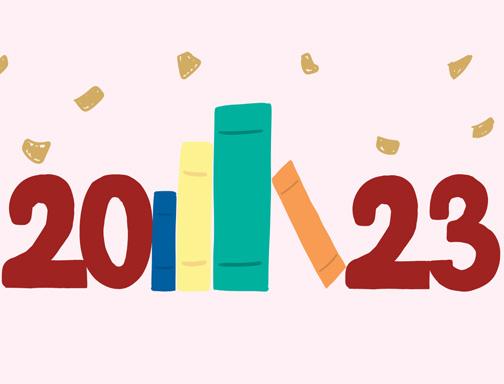
“There’s been a great deal of concern for a number of years that standardized tests aren’t fair, and maybe biased against particular groups,” Johnson said. “In fact, that concern with the use of standardized tests is one of the reasons that the University of California doesn’t use them anymore in admissions decisions for undergraduates. We have similar concerns with the way that the LSAT is used.” According to Johnson’s
Hon. Nancy Wieben Stock, a retired judge from the UC Davis class of 1976 and president of the alumni board at the UC Davis School of Law, has been involved in the process leading up to this decision since it was proposed by Dean Johnson.
“Our law school has been climbing those rankings for many years, thanks largely to our success in producing successful lawyers,” Wieben Stock said. “But we realized that pursuit of higher rankings could come at a cost to other factors that make the law school successful, [such as] promoting diversity, equity and inclusion in the law school admissions process and [the] recruitment of a diverse faculty.”
Admissions was a big part of the internal conversation leading to the decision to withdraw data, according to Johnson, because the U.S. News and World Report rankings are considered a powerful indicator to prospective law students. This means that withdrawing from submitting data for the rankings could have a negative impact on admissions.
“If I have a roomful of prospective law students, and ask them how many people have looked at the U.S. News rankings, I can almost guarantee that everybody will raise their hand,” Johnson said. “So they are important.”

However, despite the potential drawbacks of the decision, and some dissent from a few faculty and alumni, Johnson said that over 90% of feedback he received was in favor of not participating anymore.
BY RACHEL GAUER campus@theaggie.org
On Oct. 31, 2022, “Unearthed,” Greenpeace UK’s environmental-based journalism project, published a piece titled, “How the livestock industry funds the ‘greenhouse gas guru.’”
“Guru” refers to UC Davis Professor Frank Mitloehner, who has built a public platform on Twitter with over 30,000 followers under a similar name – @GHGGuru.

Mitloehner works as both a professor and researcher in the Animal Science Department and is the director of the Clarity and Leadership for Environmental Awareness and Research (CLEAR) Center, which, according to its website, strives to “help the animal agriculture sector operate more efficiently in order to meet the demands of a growing population while it lessens its impact on the environment and climate.”
Much of the research the center and he conduct concerns methane emissions from livestock. Methane is a greenhouse gas that has a warming potential more than 28 times that of carbon dioxide but is much shorter-lived, according to an
article on the CLEAR Center website.
The Greenpeace UK article is an exposé written by journalist Zach Boren which describes close relations between the CLEAR Center and leaders in the livestock industry. The article argues that this relationship influences CLEAR’s research related to the industry’s impact on the environment. Following the article’s publication, The New York Times (NYT) published a separate piece on Oct. 31 about Mitloehner titled, “He’s an Outspoken Defender of Meat. Industry Funds His Research, Files Show.”
The CLEAR Center website’s “About” page explains in detail what the center believes is the value of receiving funding from and having relations with the livestock industry.
In an interview with The California Aggie, Mitloehner emphasized the transparency that both he and the CLEAR Center maintain in regard to their funding.
“All of our funding was publicly disclosed,” Mitloehner said. “Every time I publish something, the funding source is disclosed. There is nothing fishy about it; this is standard operating procedure.”

FOLLOW US ON SOCIAL MEDIA @THECALIFORNIAAGGIE @CALIFORNIAAGGIE @CALIFORNIAAGGIE THE CALIFORNIA AGGIE SERVING THE UC DAVIS CAMPUS AND COMMUNITY SINCE 1915 THEAGGIE.ORG VOLUME 145, ISSUE 11 | THURSDAY, JANUARY 12, 2023
A recent New York Times article questioned Professor Frank Mitloehner’s funding from and connections to the livestock industry
The decision follows other schools’ leads, citing concerns over the methodology of the rankings
READ MORE FIVE READS TO KICK OFF THE NEW YEAR SEE PAGE 7 There’s no better way to start 2023 than with a healthy new hobby.
letter, the decision to withdraw came after long deliberation between the law school’s faculty and the alumni board, as well as the students attending the school of law.
UC Davis Animal Science Professor Frank Mitloehner. (UC Davis / Courtesy)
LAWPULLSOUT on 8
AGGIE FILE
What you should
about the upcoming unionization election at the two Peet’s Coffee locations in Davis on Jan.
Two Davis Peet’s cafes, including the one downtown on E street, file paperwork to unionize. (Aggie File)
ANIMALSCIPROF on 8
Increase
BY LA RISSA VASQUEZ city@theaggie.org
On Nov. 30, Yolo County, the city of Davis and UC Davis signed a collaborative resolution to build a campaign called “Hate-Free Together.”
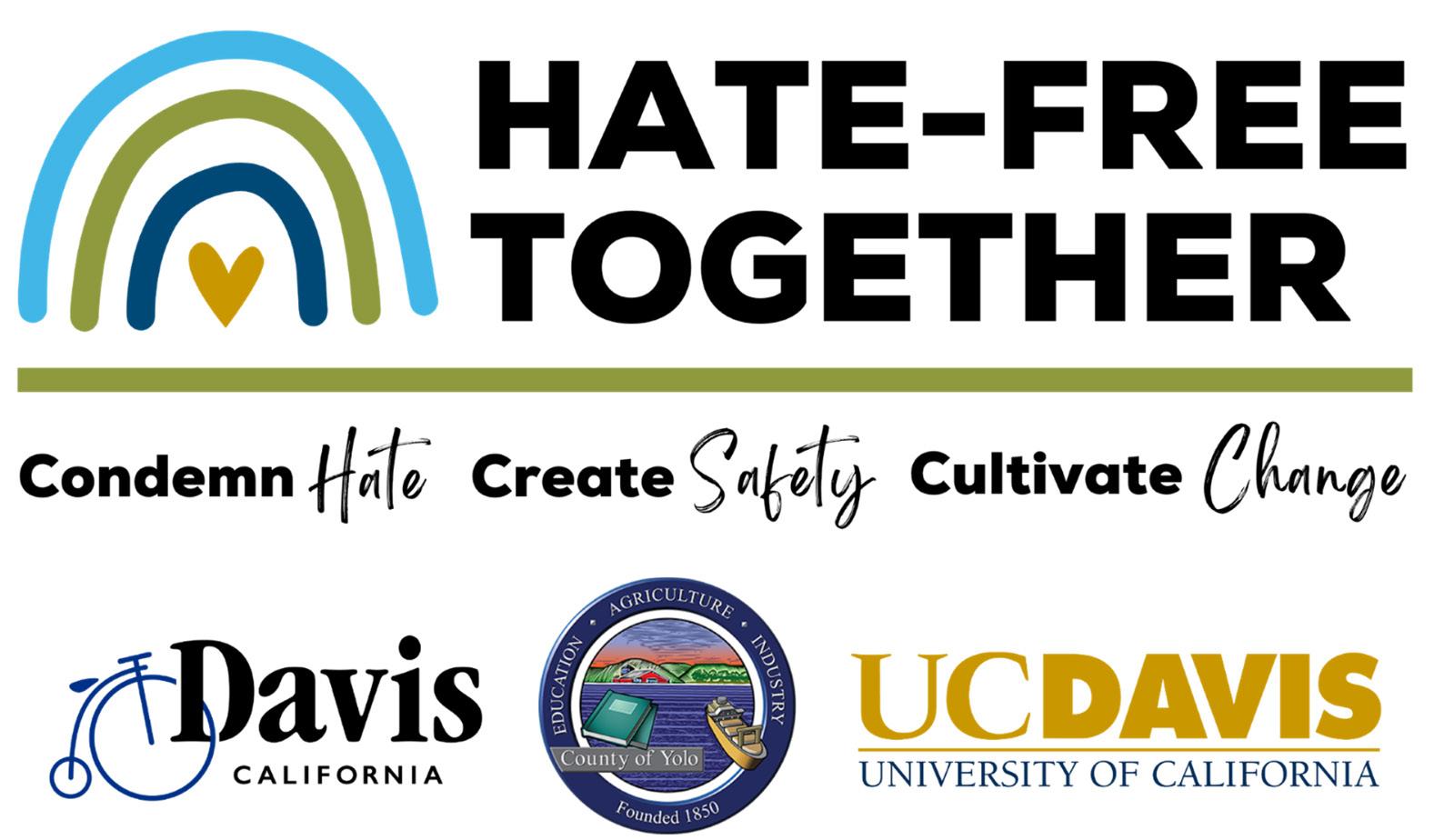
The campaign aims to combat discrimination in the community by educating businesses, public agencies and individuals about how they can be agents of compassion.
Mayor Lucas Frerichs talked about the discussions he had with Chancellor Gary May and Yolo County Supervisor Don Saylor leading up to the resolution. Mayor Frerichs said discussions became more serious after antisemitic banners were hung across the Blue Ridge Road Bikeway and Highway 113 overpass on Aug. 28.
“We were all very troubled by some of these incidents,” Frerichs said.
“The banners [are] one thing. Both on campus and in the community, there have been a number of instances of swastikas popping up [as] graffiti in different locations both on campus and [at] apartment complexes and around the community. I think those have definitely been a real concern.”
According to the California Department of Justice’s annual report on hate crimes, Yolo County recorded 21 hate crime events in 2021. Yolo County Supervisor Jim Provenza said that he believes a united resolution
such as Hate-Free Together sends a powerful message.
“People who are victims of hate, whether it be graffiti or a physical attack or [an] attack on property, [...] feel very unsafe and insecure and also very alone,” Provenza said. “And we found that by putting the county and the city and the university behind the resolution, it’s telling [people], ‘No you’re not alone; we’re with you, we support you and we’re going to take whatever steps we need to help you.’ So the resolution in and of itself is important.”
Workshops will be held in the early months of 2023 to gauge the community’s needs. Some of the resolution’s goals will be to create zero-tolerance policies, offer cultural competency training and provide resources on how to report when incidents of hate occur in the workplace or at schools. Supervisor Provenza said that the campaign revolves around education, prevention and understanding the consequences of hate.
“When an incident does occur, we need to have a plan [for] getting together as a community, not just government but [as] community leaders [or] religious leaders, and it should be something that kind of happens automatically,” Provenza said. “On the civil side, there’s some pretty strict sanctions for this type of behavior. A person can sue for
punitive damages, meaning that even if you can’t show that you lost money or lost property, you can still recover damages. Most importantly, it tells a person committing the act that ‘Yeah, there is a consequence,’ and I’d like to see volunteer attorneys be ready to go into action.”
Davis City Councilmember Gloria Partida said that the early stages of the initiative allow for full community
UC DAVIS SOCIOLOGY LECTURER SHARES EXPERIENCE BEING LGBTQ+ IN THE UNITED STATES MILITARY UNDER DON’T ASK, DON’T TELL
Living in an environment that perpetuates homophobia and gender inequality, Courtney Caviness had to hide her identity in fear of retaliation, until she decided to leave
complete loss of veterans’ benefits, according to TIME Magazine.
The justification for the “Don’t Ask, Don’t Tell” bill was that LGBTQ+ persons in the military “ create an unacceptable risk to the high standards of morale, good order and discipline, and unit cohesion that are the essence of military capability.”
In an article published in the Journal of Homosexuality in 1995, Dana Britton and Christine Williams, sociology professors at the University of Texas at Austin, explained that heterosexuality, masculinity and misogynistic conduct are emphasized in the military in order to encourage and preserve strong bonds among male soldiers, which is thought to be central to an army’s success in armed conflict.
LGBTQ+ members of the army are believed to threaten that, according to Britton and Williams. Thus, the military actively discourages homosexuality through bans on service like “Don’t Ask, Don’t Tell” and, according to Britton and Williams, the use of force and discipline.
input and exploration of their ideas and needs.
“As a community, you do need places where you can process hate incidents or other issues that are happening and talk about ways that you can be proactive [and] ways that you can do things so that we are building communities where everyone feels safe [in] their identities,” Partida said. “And right now, it’s so new and so
wide open that it’s kind of the exciting part about it; it can be anything that we think will work, and [we can] also explore.”
An official campaign website for Hate-Free Together and more information will become available in the coming months. Members of the community are encouraged to stay connected and provide input for the campaign.
BEYOND THE IMAGINATION: HOW IMAGINING AMERICA IS WORKING TOWARD A BETTER FUTURE
Community is at the forefront of Imagining America’s Mail Art Project and annual National Gathering
BY LEVI GOLDSTEIN features@theaggie.org
Courtney Caviness, a lecturer of sociology at the University of California, Davis, has a commanding presence in the classroom. For each word she speaks, each syllable is distinctly pronounced. Her firm, authoritative voice projects across the rows of students.

“I hate the military,” Caviness said.
She is also a veteran.
Caviness joined the intelligence branch of the United States Army in 2006. After obtaining her bachelor’s degree in English at the University of Iowa, Caviness was feeling directionless. She was indecisive about what she wanted to get a degree in and had changed majors a few times.
“I’m a serial dabbler,” Caviness said. “I like to know something about almost everything.”
Additionally, she had navigated multiple unhealthy relationships that left her with a shaky sense of self.
“I was in a place in my life where I really needed to do something drastic, to change my geographic location and disrupt all facets of my life, just have a big change,” Caviness said.
For her, this change was joining the military. It was exactly the kind of challenge she needed to push her forward.
It was also an opportunity to escape the Midwest, where she said she never fit in. Caviness explained growing up feeling like an outcast because she presented in a more masculine manner than her peers. Still today, she wears button-up shirts with
the sleeves rolled up that stay tucked in during her work days and a pair of neutral-toned dress pants.
“I’ve always been, in terms of gender, someone who didn’t fit the traditions of what a girl or a woman is, in relation to those expectations or my appearance or any of that,” Caviness said. “I had no desire to do hair or nails or play […] those hand-slapping games.”
But the army didn’t feel like home to her, either. Caviness said she felt like the odd one out from the beginning.
“I had a reputation, jokingly, from one of my basic training drill sergeants […] for being the person who thought differently and who didn’t politically align; that’s for sure,” Caviness said.
Caviness was already enlisted when she began coming to terms with her sexuality.
“It was confusing and isolating, especially being in the military and knowing as I was working through it that there was this added layer of needing to keep some level of secrecy, […] that [it] could potentially be used against me or could be aired,” Caviness said.
Caviness’s fears were not unfounded. 2006 was five years before “Don’t Ask, Don’t Tell” was repealed.
The “Don’t Ask, Don’t Tell” policy, implemented in 1994 by the Clinton administration, allowed gay, lesbian and bisexual citizens to serve in the military as long as they did not disclose their sexuality. This meant that if the military were to find out that Caviness was not heterosexual, she could potentially be dishonorably discharged, which would result in a
Caviness said she experienced a culture of “hegemonic masculinity” during her time in the military, one that perpetuates gender inequality and reinforces men’s dominant position in society. She also identified the sense of unity characteristic of military life.
“There’s certainly a lot of emphasis placed on camaraderie and building those relationships and supporting one another and having some level of loyalty,” Caviness said.
Caviness was able to form strong friendships with other service members.
“Having some level of bonding with people that I was in that situation with became a very important thing,” Caviness said. “I think it’s easy to connect with people when you’re all in the same situation where you don’t have outside influences and you can’t get away.”
Despite this, Caviness often felt isolated. Her queer identity made her an outlier and a direct challenger to the military’s homogenous culture, which meant that she could potentially be targeted.
“The people that I knew, myself included, just had a sense that it was possible or had this looming cloud,” Caviness said. “So we would do our best to sort of manage information about ourselves or manage what we said about various activities to help avoid any potential [incident].”
Caviness said her experience differs from many other LGBTQ+ members of the army. She rarely encountered blatant homophobia. Caviness acknowledged that her privilege may have contributed to her feeling safer than others in the same situation.
BY MARIA MARTINEZ CASTRO features@theaggie.org
In addition to being home to some of the world’s top scientific research, UC Davis also hosts Imagining America, a consortium of diverse individuals working in the humanities and across disciplines to nurture better communities and create a better future.
“Imagining America is one of several different professional associations with a strong focus on community engagement,” said the membership director for Imagining America Trina Van Schyndel. “In particular, we’re really interested in how universities and the individuals that work in universities, whether they’re faculty, staff or students, engage with and work alongside community members and community organizations to address important social, environmental [and] economic issues.”
As a group, Imagining America calls on people’s unique senses of creativity and encourages them to harness those tools and interests to promote community engagement and social change.
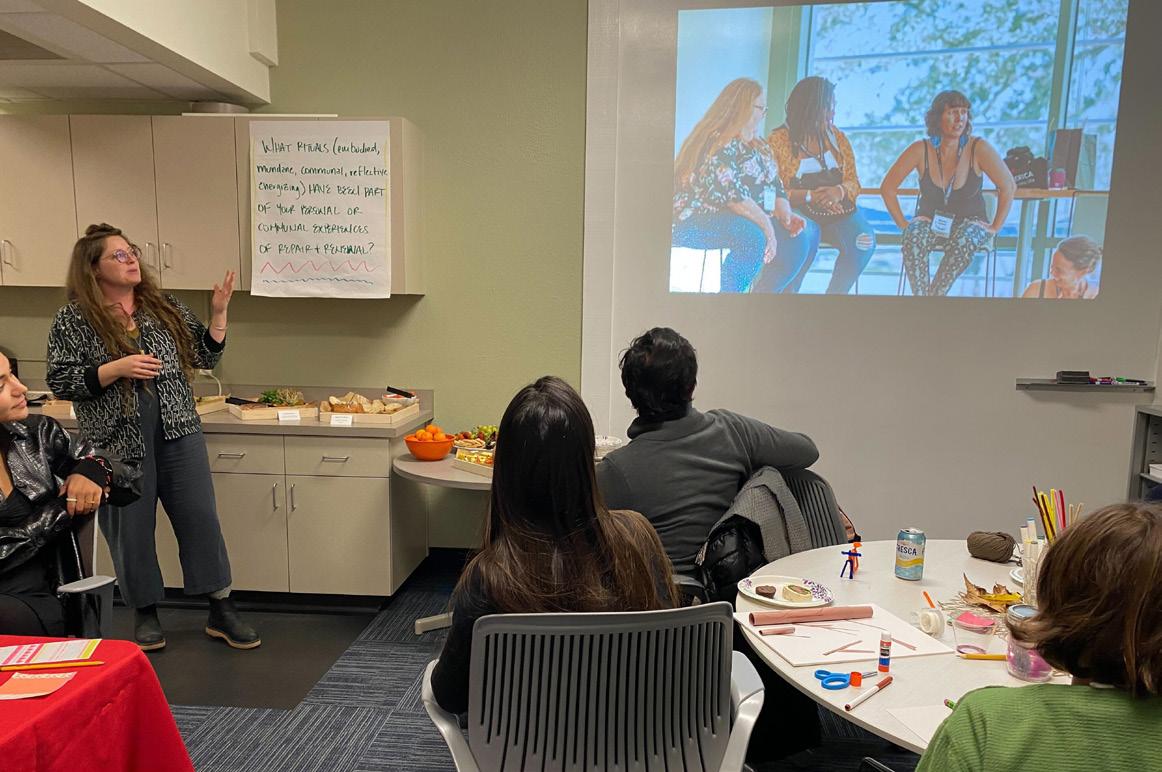
“We’re very interested in folks who see the value and are interested in the methods that come from the arts or the humanities or the design fields,” Van Schyndel said. “I think that’s kind of what makes us unique across these multiple associations that all focus on community engagement.”
Ariana Abtahi, a fourth-year communication major and social media intern at Imagining America, shared why she believes having an artand humanities-based hub tackling current and pressing social issues is important.
“I think that Davis has a lot to be proud of in terms of research [and] obviously leading in vet sciences,” Abtahi said. “But I do think that sometimes that can lead students who are in the humanities programs to feel not as important or not as heard […] It can lead to people not thinking that they’re enough to be where they are
at Davis. A whole institution that is for those who study [the humanities] provides a safe space for not only the communities they want to help but for the people who are part of it to know that they’re heard [and] their work is appreciated.”
Marisa Raya, a second-year Ph.D. student in the Geography Graduate Group and an Imagining America PAGE (Publicly Active Graduate Education) Fellow, said that Imagining America’s focus on social change through community engagement has been important to her academic and professional journey.
“I’ve always tried to seek out better ways of elevating disadvantaged community voices in government,” Raya said. “Part of my Ph.D. research, which is on land reparations and land use in California, revolves around how different communities define land reparations and land access and property rights. I really wanted to have an academic home and a group that prioritized community engagement as the driving force behind our research. And I wanted to be connected to a cohort of other fellows, as well as the scholars who are affiliated with Imagining America.”
Both Abtahi and Raya attended Imagining America’s annual National Gathering, an event during which individuals share and celebrate their findings, personal paths and art to promote community and social progress. This year, the National Gathering took place in New Orleans from Oct. 14 to 16. The theme was Rituals of Repair and Renewal.
“That was a very transformative weekend for me,” Abtahi said. “I was only there for four or five days, but I left a different person. And I’m not just saying that, I really did learn so much.”
Raya said that the National Gathering inspires attendees to create their own unique ways of sharing and building knowledge to work toward a more just society.
2 | THURSDAY, JANUARY 12, 2023 THE CALIFORNIA AGGIE YOLO
LAUNCH
COUNTY, CITY OF DAVIS AND UC DAVIS
HATE-FREE TOGETHER CAMPAIGN
in hate crimes results in resolution to eradicate hate through community-based program
MIRANDA LEE / AGGIE
CAVINESS on 8
UC Davis sociology lecturer Courtney Caviness. (Courtney Caviness / Courtesy)
IMAGININGAMERICA on 8
Imagining America’s first “Happening” event of the year on Dec. 1. (Trina Van Schyndel / Courtesy)
LOW VOTER TURNOUT IN ASUCD FALL 2022
ELECTION SPARKS PLANS FOR IMPROVING VOTER PARTICIPATION IN UPCOMING ELECTIONS
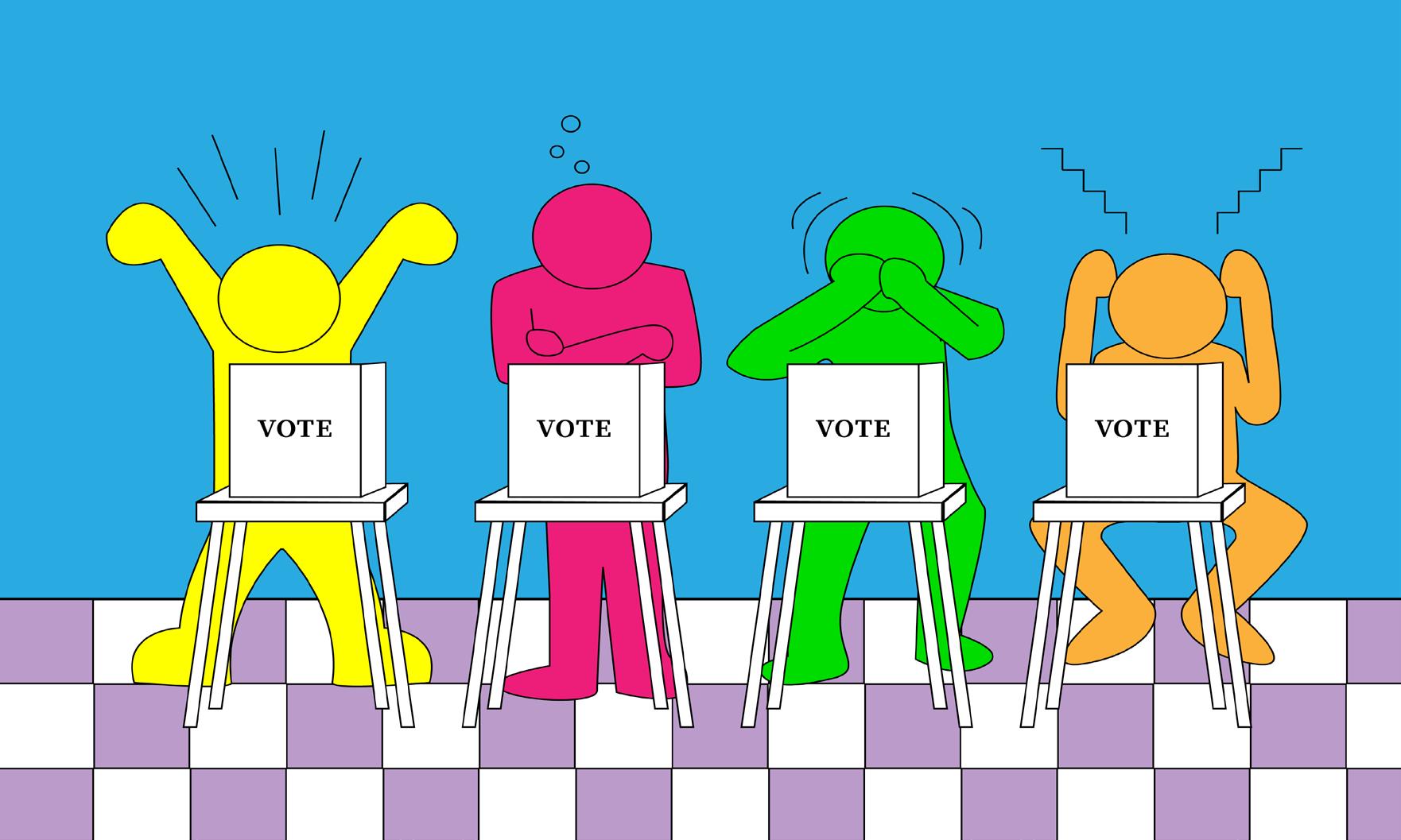 BY LILY FREEMAN campus@theaggie.org
BY LILY FREEMAN campus@theaggie.org
The fall 2022 ASUCD elections had a historically low voter turnout of 5.58%, according to the ASUCD elections website, with less than 2,000 undergraduate students participating in the election. The site also outlines that voter turnout has been consistently below 20% since the spring 2016 election, with the exception of the winter 2019 election.
The ASUCD elections have a significant impact on students whether they vote or not, according to Senate President Pro Tempore Gaius Ilupeju, who encouraged students to vote in future elections.
“The senate candidates [...] approve an $18 million budget that is assembled through student fees and allows for the continuation of services like Unitrans, which is utilized not just by undergraduates but the entire city of Davis and other vital services like the CoHo and the Pantry,” Ilupeju said.
ASUCD Senator Stephen Fujimoto, who was elected to his current position in the fall 2022 election, shared his thoughts about the persistent issue.
“[It’s] concerning,” Fujimoto said. “Our work is going to affect pretty much every UC Davis undergraduate here on campus, [but] only 5.58% had a say in who their elected leaders are.”
Ilupeju expressed similar concerns.
“What we are witnessing right now with election turnout is not new,” Ilupeju said. “It has been a problem for years, but COVID-19 exacerbated
that issue. I think I speak on behalf of all of the ASUCD Senate members [when I say] that we are not pleased with the election turnout. We have been having conversations about how to move forward and what we can do in upcoming quarters.”
Without a voter turnout above 20%, any initiative that involves student fees automatically fails, according to the ASUCD Constitution, regardless of the majority vote. As a result, several initiatives on the ballot over the past few years have failed despite popularity. This includes one that sought to eliminate portions of athletic fees and most recently, a measure that would provide continued funding to The Green Initiative Fund (TGIF), which is a group on campus that provides financial resources to sustainable organizations and projects run by UC Davis undergraduate students.
This is the second time that the TGIF fee referendum has failed due to insufficient voter turnout, which originally appeared on the ballot in the spring of 2021. Madison Suoja, the program manager for TGIF, spoke about the next step they’re planning to take in order to secure funding for the program and what will happen if the measure fails again.
“[The spring 2023 election] will almost definitely determine the fate of TGIF,” Suoja said. “If we do not pass, TGIF is likely going to end at the end of this year.”
Ilupeju outlined various strategies that he said ASUCD is hoping to implement for upcoming elections in
SENATORS DISCUSS EXECUTIVE OVERSTEPPING OF POWERS, HEAR QUARTERLY REPORTS AND FAREWELL COMMENTS AT DEC. 1 MEETING

Several new officers were sworn in and seated for winter quarter 2023
BY LILY FREEMAN campus@theaggie.org
Vice President JT Eden called the meeting to order at 6:13 p.m. on Thursday, Dec. 1. After roll call, he read the UC Davis Land Acknowledgement.
Next, Senators Celeste Palmer, Alexis Reyes and Vaneza Gonzaga and External Affairs Vice President Shruti Adusumilli all gave their farewell comments as their time on the Senate floor was up at the end of the quarter.
“Being a part of student government and ASUCD has really shaped a lot of my college experience,” Adusumilli said. “Being on ASUCD, you truly gain a lot of learning experiences that other people would not have at such a young age while in college.”
The seating of new officers, as well as judicial council member and interim senator confirmations, followed these farewell comments.
Stephen Fujimoto, Jacob Klein, Zeki Xu, Aarushi Raghunathan and Erek Leschyn were all sworn in and seated as senators.
Shrey Gupta, a first-year computer science major, was sworn in and seated as interim senator.
Celene Aridin, a third-year international relations major, was sworn in and seated as external affairs vice president.
Logan Tatsuya Ueno, a fourthyear political science major, was sworn in and seated as the transfer student representative.
Next, President Radhika Gawde gave the State of the Association Address.
“People just don’t feel that ASUCD is a value,” Gawde said. “I want us to be reminded that while our wins this quarter are something to take pride in, we must do more to proactively communicate toward the student body about the important work that we do.”
Following the address was a presentation by Jenny Vaccari, an
assistant at Ombuds UC Davis, who explained how this office supports the student community. Ombuds assists UC Davis community members by listening to and helping resolve conflict, according to Vaccari, whether that be through individual meetings with Ombuds assistants or group workshops.
Next, the Senate moved to public comments. First, Senate President Pro Tempore Gauis Ilupeju spoke about his authority in the Senate.
“Since I was elected in week six, [Eden] has been performing duties that are the responsibilities of [the President Pro Tempore],” Ilupeju said. “I have approached [Eden] on several occasions to remind him of what my responsibilities are [and] to achieve a diplomatic resolution to the matter. Altogether, he was dismissive of the comments I raised, [and] it has become increasingly apparent that the executive branch has overstepped its bounds.”
Responding to Ilupeju’s comment directly, Eden publicly apologized for the overstepping of bounds that Ilupeju put forth, and said that he hopes to improve this partnership throughout both of their terms. Ilupeju then publicly accepted this apology.
Next, Klein publicly commented on a different subject.
“I have heard [...] that various members of the table, who I am not going to name [...] have accused me of holding dual loyalty to Israel, which is an antisemitic trope,” Klein said. “I want to mention on the official record that I found it very disheartening. I do open this up for anyone [to] identify yourself as being one of these people who asked if I was holding dual loyalty. I invite you to say what you have to say now.”
While senators did publicly apologize for what Klein has experienced, no individual identified themself as someone who made these accusations against him.
order to address the voter participation issue.
“One of the bills you will be seeing at the first ASUCD Senate meeting of winter quarter will be to create an internal committee that looks at issues pertaining to engagement and outreach,” Ilupeju said. “This committee will look into holding events during elections that make them more pronounced in the campus environment. [We want] to have a physical presence, where we can engage with people and interact with them to express more ideas and provide
information about the elections.”
Ilupeju said that ASUCD also plans to raise election awareness through marketing on Unitrans buses, displaying election information on the television screens in the CoHo and collaborating with Student Housing and Dining Services to publicize election information.
Fujimoto said that he believes another approach to increasing voter turnout is to make the elections more competitive.
“The head of ASUCD, our main
student representative to the chancellor and the Academic Senate, the External Affairs Vice President, the Transfer Student Representative and the International Student Representative were all uncontested [during the fall 2022 elections],” Fujimoto said. “I find that deeply problematic. If races were more competitive, candidates [would be] more likely to encourage students to vote, and there would likely be a wider electorate.”
STRUGGLE TO ACQUIRE TRANSPORTATION ACCOMMODATIONS AT UC DAVIS
BY REBEKA ZELJKO features@theaggie.org
Many students with disabilities at UC Davis go through the process of obtaining accommodations with the UC Davis Student Disability Center (SDC) to ease their academic experience.
According to the SDC website, “The Student Disability Center (SDC) is the campus unit designated to receive requests for accommodation, approve services, and coordinate support for students with disabilities to create equitable access to the University’s educational programs.”
The SDC is responsible for a wide variety of services and accommodations for students, according to director Jennifer Bill. The accommodations students with disabilities seek range from extended test-taking to transportation services.
“The net is pretty wide,” Bill said. “We are the office that handles disability requests from students. Our charge is academic accommodations. Pretty much everything that comes through us is any accommodation for a disability.”
However, students’ experiences with the SDC aren’t always positive. Sonia Romanova, a third-year physics major, injured her neck ahead of the fall 2022 quarter. She contacted the SDC to seek accommodation, but she found the experience to be difficult.
“It was easy to get in touch with them, but it wasn’t easy to stay in touch with them,” Romanova said. “They don’t have much pull in terms of how they can help you. They can give you information, but there’s not much they can do to enforce accommodations.”
Romanova sought out an online accommodation for a coding class that was offered online during the COVID-19 pandemic. She was eventually denied the online course.
“Obviously, if it was a chem lab, that couldn’t be accommodated because they can’t send me hydrochloric acid in the mail,” Romanova said. “But it was a coding lab, like we did this online during COVID anyway.”
The reasoning behind the lack of accommodation further emphasized Romanova’s frustration.
“In their words, ‘The online education wasn’t up to standard,’ so they couldn’t accommodate me online, even though during COVID they taught these classes online,” Romanova said. “So it’s basically the university admitting that their classes were not good quality during COVID, even though we paid full tuition. That money could have gone to my medical bills instead.”
Romanova’s frustrations weren’t just with the Physics Department’s lack of flexibility. She also said she experienced a lack of responsiveness from the SDC.
“I contacted them three weeks before the quarter, and they contacted me a week into the quarter,” Romanova said. “It’s not necessarily their fault, but
they lack the ability to improve a lot of situations for disabled students. Maybe they are understaffed or underfunded; I don’t know.”
Romanova had to take two quarters of academic leave due to the lack of accommodation and the slow communication.
Despite Romanova’s experience, Bill maintains that the SDC sticks to a responsive schedule.
”We don’t want people waiting a long time; quarters move very quickly,” Bill said. “This is an internal process. I review student requests, and I assign them to specialists Monday, Wednesday and Friday mornings. So it’s really always less than two business days.”
Much of the disconnect between students and the SDC tends to occur because of jurisdictional issues. Students with disabilities encounter a large scope of difficulties in higher education, but the SDC is exclusively responsible for providing academic accommodations.
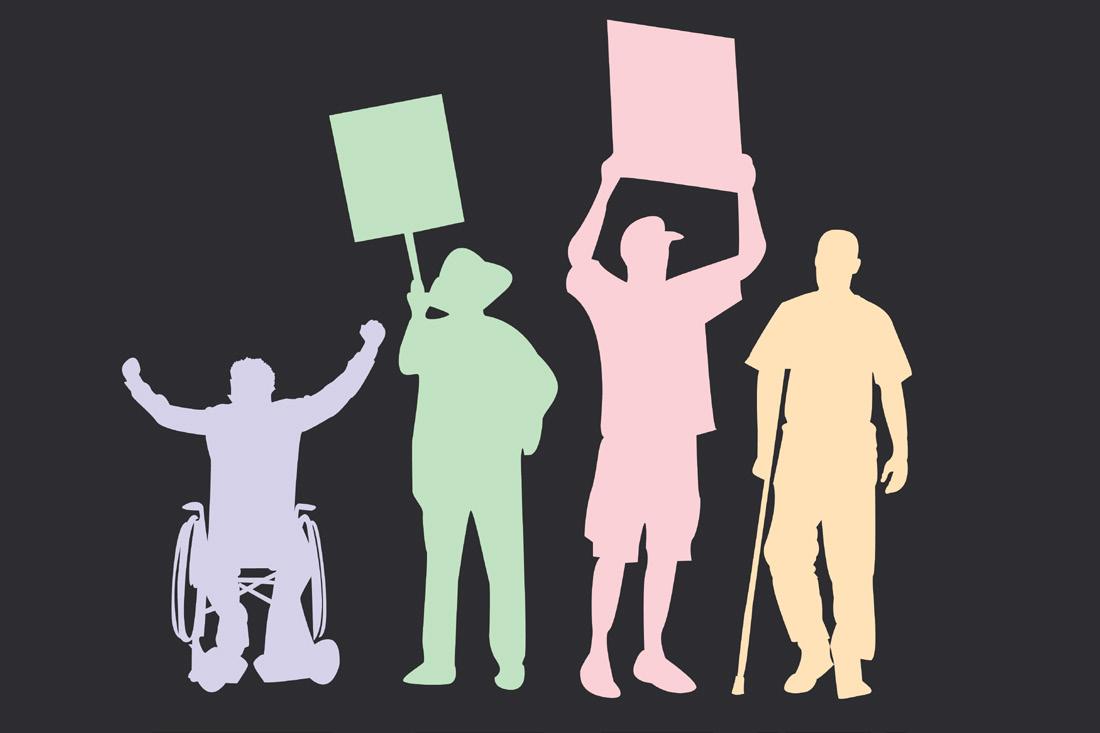
Morgan Babauta, a second-year double major in managerial economics and environmental policy analysis and planning, experienced first-hand how these jurisdictional disconnects affect students with disabilities.
”I tore my ACL, and I needed surgery for it, so I was on crutches before and after the surgery,” Babauta said. “I couldn’t easily get to class because I couldn’t bike, and obviously crutching to class was painful.”
Babauta’s leg injury inhibited her from commuting to class easily, so she attempted to request transportation services from the SDC.
“I filled out the pre- and postsurgery documents and submitted them to the SDC,” Babauta said. “The doctors I was seeing were having difficulty diagnosing my injury, so I didn’t have a doctor’s note until a week into using crutches.”
Despite a three-day grace period, Babauta wasn’t able to obtain necessary transportation services because of this technicality.
“The SDC actually denied me transportation because I didn’t immediately have a doctor’s note,” Babauta said. “But the problem was [that] I needed to go to class immediately.”
Babauta was eventually able to fill out all documents, but she still wasn’t able to receive transportation services.
“On the website, you can schedule times to be picked up and transported,” Babauta said. “I did that like three times, and I never got a response from them.” Bill said the SDC’s official role is to ensure academic accommodations, while transportation services are arranged with a separate campus organization.
“Our charge is academic accommodations,” Bill said. “We set the accommodation but transportation services handle the transportation.”
Although the SDC is responsible for setting academic accommodations, Babauta still found that she had to arrange them herself.
“My academic accommodations were completely done between me and the professors, not through the SDC,” Babauta said. “I just stayed home until finals, and I emailed my professors so I was able to take my classes remotely.”
Other students found that necessary accommodations were met accordingly, including Amara Aimufua, a third-year sociology major.
“I tore my Achilles in June 2022,” Aimufua said. “The nice thing is, I have ADD, so I’m already familiar with the SDC, and I [had] my whole summer to figure out my accommodations.”
Over the course of her time at UC Davis, Aimufua was able to receive both academic accommodations and transportation services.
However, Aimufua also encountered some difficulties.
“It was really annoying because there was a gap between the SDC transportation and TAPS services, so I had to get there by myself,” Aimufua said. “The whole first week of school they were late and they didn’t have enough drivers. I started biking more often if I could to avoid that issue. I don’t know if that was safe.”
Bill said the mission of the SDC is to ensure students with disabilities have the best academic experience possible, and the difficulties that have been reported are not the intended outcome.
THE CALIFORNIA AGGIE THURSDAY, JANUARY 12, 2023 | 3
Following the failure of the TGIF ballot measure despite popularity, ASUCD senators reflect on what can be done to increase turnout in the future
AGGIE FILE STUDENTS WITH DISABILITIES AND TEMPORARY INJURIES
Experiences vary for students seeking academic and physical accommodations, but many encounter a lack of communication, long waiting times and inadequacy of services
DISABILITYCENTER on 8 SENATE on 8
JOANNE SUN / AGGIE
CHRISTINA LIU / AGGIE
LOWTURNOUT on 8
ADVICE ON LOVE, COURTESY OF THE ANCIENT GREEKS
It’s important to recognize all the types of love in your life
BY YASMEEN O’BRIEN yjobrien@ucdavis.edu
I have always thought that the word “love” is not specific enough. There are too many kinds of love for there to be only one word for it. As a result of this language limitation, I have often struggled to express myself properly. For example, I am “in love” with my friends — I enjoy spending time with them, I am eager to learn more about them, I worry about them when they come home late and I want to grow old with them. However, I do not desire to have romantic relationships with them. The closest words to express how I feel are “in love,” but they have additional meaning that doesn’t apply.
As a society, we put too much emphasis on romantic love. I believe we have developed something of an addiction to it. As a result, issues surrounding self-worth arise when we don’t have romantic love in our life. But romantic love is far from the only, or even most valuable, love we experience. We can learn something from the Greeks in this sense; they identified six kinds of love, along with a word for each of them.
1. Eros
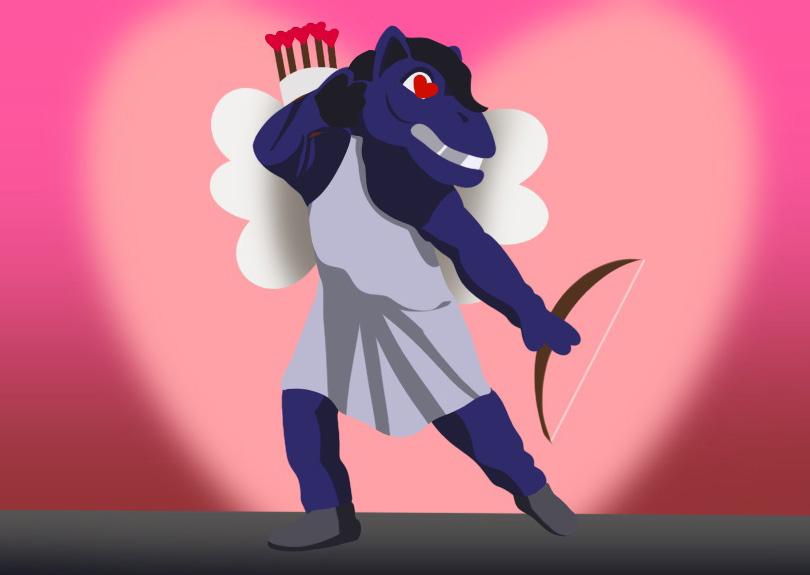
Eros, named after the Greek god of fertility, represents the idea of sexual passion and desire. As I learned more about this facet of love, I thought it was interesting that the Greeks didn’t always think of it as something positive, as we might now. It was regarded as dangerous and fiery, an irrational form of love that could take hold of you and possess you. It involved a frightening loss of control. As I compared these views to the widespread cultural beliefs surrounding romantic love in the modern age, I noticed the paradox that many people hope to fall “madly” in love, which, by definition, involves losing control.
2. Philia Philia, or deep friendship, was valued by the Greeks far more than eros. It meant showing loyalty to your friends, sharing your emotions with them, and making sacrifices for them. It was described as a deep comradely friendship akin to the bond that develops between brothers who fight side by side on the battlefield. There is also another kind of philia, sometimes called storge, that represents the love between parent and child.
3. Ludus Ludus, or playful love, is a playful affection between friends, children or casual lovers. It embodies the flirting
and teasing that comes with the early stages of a relationship, as well as sitting around laughing and bantering with friends or going out dancing. I think this one is especially important because of its prevalence in many people’s lives. I enjoy how simple it is; it’s just having fun with others. Sharing laughter is a wonderful kind of love.
4. Agape Agape, or love for everyone, is a selfless love. It’s the love extended to all people, ranging from family members to distant strangers, and is associated with some religious traditions. C.S. Lewis, a British writer and Anglican lay theologian, referred to agape as “gift
COFFEE HOUSES ENCOURAGE INTELLECTUAL THOUGHT
BY MAYA KORNYEYEVA mkornyeyeva@ucdavis.edu
Historically, coffee shops have served as a place for the gathering and birth of creative thought. In London, they were a site for aristocrats to gather and muse about the latest scientific progress or the English political sphere. In Paris, coffee houses can be credited for the rise of contra-government ideas that spread throughout France and lit the fire known as the French Revolution. And in the Ottoman Empire, coffee was a unifying beverage enjoyed by both the elite and the lower class, melting social structures and bringing great thinkers together.
Although, admittedly, the coffee houses of the past were organized quite differently from the modern Starbucks or Peet’s Coffee, I believe that the nature of coffee as a social phenomenon still remains. Over the course of fall quarter, I paid a visit to quite a few local coffee shops in downtown Davis, including Mishka’s, Black Frog Coffee and Philz. The atmosphere inside each and every one was phenomenal, and I believe, quite difficult to find and enjoy elsewhere.
As I walked into Mishka’s for the first time, the scent of freshly-brewed coffee enveloped me and the bustle of intellectual conversation met my ears. Bits of sentences wafted through the air in my direction; I picked up
an argument about what was the best way to solve an equation, a student passionately explaining a new concept they learned in physics and a couple laughing over a mutual joke. A wall of packaged coffee with origins in Sumatra, Peru and Ethiopia was on display behind the counter, and an old typewriter by the door added to the ambiance and decor of the shop.
Standing in line, I watched as one, two, then three of the open seats in the café were taken by students precariously balancing their lattes and laptops. The shop was busy, but in the very best way, fostering creativity and lighthearted discourse.
As I took my seat at Mishka’s, or any other coffee house in Davis, my mind was clear and focused on the task ahead of me. Whether I had work to complete for my psychology professor or a paper to write, the gentle music, bright open windows and neat tables were incredibly inviting and thoughtprovoking. Perhaps it was the history of the coffee shop as an intellectual crossroads that helped me focus, or maybe it was just the change of scenery that made the difference. I like to think it was both.
Not to mention, what better tool to help you study than a delicious cup of coffee? While coffee beverages can be
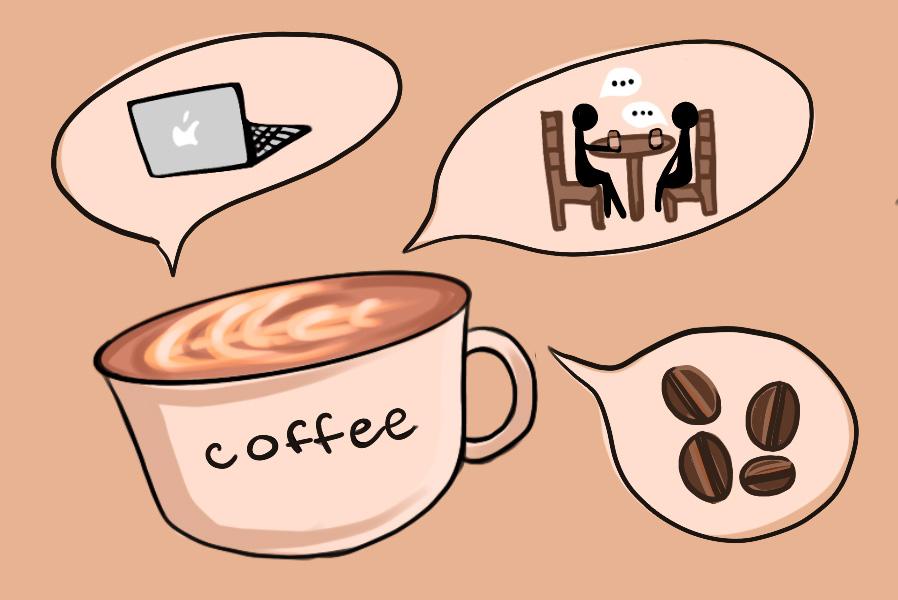
rather expensive if you purchase them consistently, a nice boost of caffeine is exactly what I, and many others, need to focus during a long study session. So, bought sparingly, coffee is an excellent beverage to keep you wakeful and energized for several hours at a time.
That being said, regularly changing the environment you are studying in has been proven to increase memory retention and improve concentration.
Choosing to study in a coffee shop once or twice a week can help bring variety into your academic life and expose you to experiences and individuals that you wouldn’t normally encounter on campus. Not only this, but just observing the baristas efficiently preparing drinks and managing such a busy environment motivates me to remain focused and work hard on whatever assignment I have at hand.
At the end of the day, if you’re looking for a change of pace, some inspiration or a few like-minded individuals to converse with, look no further than your nearest coffeehouse.
Disclaimer: The views and opinions expressed by individual columnists belong to the columnists alone and do not necessarily indicate the views and opinions held by The California Aggie.
love,” similar to the views of Theravāda Buddhism, where it is described as “universal loving kindness.” I think this type of love is crucial. With empathy levels in the U.S. declining drastically over the past 40 years, and with the most substantial fall occurring in the last decade, reviving our capacity to care for fellow human beings is an urgent matter. It can bring love to our lives, as well as enrich the love in others’ lives.
5. Pragma Pragma, or longstanding love, is a mature, realistic love that is most commonly found in long-established relationships. It’s about making compromises in order to help the
relationship work over time. It’s about showing patience and tolerance. I think of it as a slow and rewarding love. There was an interesting idea I came across in my research by the psychoanalyst Erich Fromm, who said that we spend too much energy on “falling in love” and need to learn how to “stand in love.” It’s about making an effort to give love rather than just receive love, which I think is profoundly admirable and can be a difficult thing to do.
6. Philautia
The last is philautia, or love of the self. I would argue this is the most important one. The Greeks recognized two types — the unhealthy version associated with narcissism, in which you become self-obsessed and focused on personal fortune, and a healthier version, which enhances your capacity to love in general. The main idea is that if you love and feel secure in yourself, you will have plenty of love to give to others. Not only does philautia enhance your relationships with others, it also enhances your relationship with yourself, which I believe is the most valuable one in your life.
Upon reflection, I’ve uncovered a few messages we can take away from the Greeks. It’s important to nurture all the varieties of love that are present in our lives and utilize the many sources of love we have. Love comes in all shapes and sizes. We shouldn’t create boundaries around what is most important because it restricts us from all the love we could be feeling. It’s valuable to recognize and appreciate all the varieties — it will probably help you discover that you have more love in your life than you think.
Disclaimer: The views and opinions expressed by individual columnists belong to the columnists alone and do not necessarily indicate the views and opinions held by The California Aggie.
HAVING A BIG EGO
BY MICHELLE MENDOZA mimendoza@ucdavis.edu
Ego is usually considered a negative thing to have. Often, having a big ego seems to mean that you are full of yourself and feel superior to others. When used in everyday speech, ego aligns with trying to satisfy the self and one’s desires, which is unlike its Freudian origins. In other words, it’s all about “me, me, me.” And most of the time, an excessive amount of ego seems unable to make up for the lack of other, better qualities. Ego has a bad rap; no one likes it and no one likes to be told they have it.

Like many others, I never wanted people to think I was full of myself or that I had a big ego. To prevent this, I would practice self-reflection. I believe it is essential to take the time to evaluate our behavior and character. Through the process of self-reflection, we can learn about our motivations and how our actions impact the people around us. As a naturally emotional person, whenever I feel conflicted, I try to think objectively and rationally. I tend to analyze myself and question my choices. I try to be a good person, to be the best version of myself.
Eventually, though, I began to realize that my introspection could often be unproductive. Sometimes I would spend hours thinking about the ways I could have taken a different approach to an essay, talked to someone I was interested in or put more effort into my work; I would think of all these ways I could have been better. I would say to
myself, “Well you’re just not that great at ‘blank.’” At the time, I thought I was being rational. I thought I had to accept that I may not be good at everything. I thought that I was being honest with myself.
This line of thinking led to days filled with anxiety and negative energy. The line between being self-aware and being self-critical can blur if you are not confident in your abilities or potential. As humans, we make mistakes; and sometimes the only way we learn is through making them. I still have to learn to let myself be authentically me, even if there are parts I don’t like.
I, and others like me, can benefit a lot from a stronger ego. Having a healthy ego allows us to be confident in our actions and to be secure enough in ourselves to learn from them. Selfreflection is essential to growth, but so are self-love and acceptance.
Nurturing my ego is a work in progress and I like to think of it as a friend; it’s my own personal hype man, and its intentions are always in my best self-interest. I hope in the future, we will build a stronger bond.
With final exams finished and the new year upon us, it’s easier now than ever to think about all the things we could have done differently. With a stronger ego, I hope everyone can be more secure in themselves and approach the new year with confidence.
Disclaimer: The views and opinions expressed by individual columnists belong to the columnists alone and do not necessarily indicate the views and opinions held by The California Aggie.
4 | THURSDAY, JANUARY 12, 2023 THE CALIFORNIA AGGIE
OPINION
How changing your study space to a local coffee shop can increase focus and encourage creativity
CAN BE THE KEY TO A HEALTHY RELATIONSHIP WITH YOURSELF
Make the most of your time here — it doesn’t
last forever
JOANNE SUN / AGGIE
MAYA KORNYEYEVA / AGGIE
AGGIE FILE
RETHINKING NEW YEAR’S RESOLUTIONS
How to approach the new year thoughtfully and with selfcompassion
With the start of a new year, it’s easy to feel pressure to set an overly ambitious goal, whether it be finally getting that six-pack or trying harder to get that elusive A in ochem. And while there’s nothing inherently wrong with trying to exercise more or improve your academic performance, putting pressure on yourself to achieve perhaps unreasonable goals will only create added stress rather than promote healthy, long-term habits.
If you’ve never worked out before, maybe try going to the gym three times
a week rather than every day. And if one week you only end up making it to the ARC twice, that’s okay. Partially meeting your goals isn’t failing, and you’re still getting stronger in the process. Goals can also be fluid — they don’t have to stay the same all year. If something unexpected comes up and you can no longer go on that hike you were looking forward to or cook that healthy recipe you’d been hoping to try, it’s okay to change your plans to ensure that goals that should be improving your life aren’t doing the opposite.
Scan to apply to work at The California Aggie!
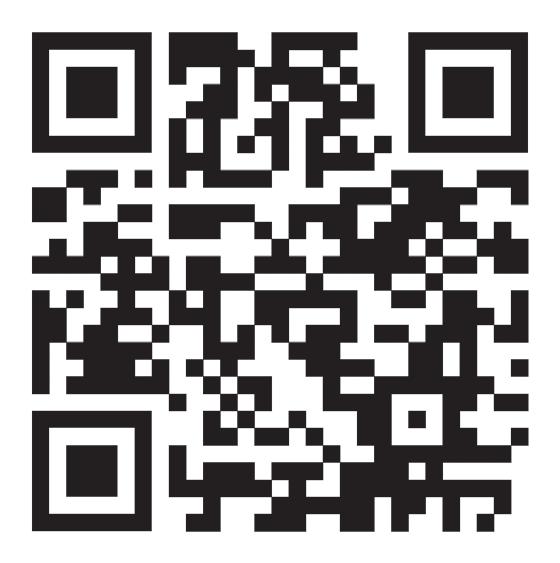
Additionally, New Year’s resolutions often revolve around external achievements such as learning new skills, traveling or getting a new job. Sometimes what we need, however, is not to focus on what we can physically do but rather carve out time to think about what would make us happiest. Setting goals that focus on making internal changes rather than external ones might be better for you and your mental health.
A better year is not necessarily one where you can check off a list of your accomplishments. It might just be one where you were happier because you found time to meditate, took more walks outdoors or sang really loudly in the car on the way home. Even if there’s no way to externally show what you accomplished, as long as you’re better off that’s what matters.
By 2024, we won’t magically have found the time to do everything we’ve always wanted, even if we complete all of our resolutions. We need to accept where we are and realize that each year that brings us a little more joy and fulfillment is a step toward selfimprovement.
If resolutions are helpful to you, make them, and if they’re not, don’t. And whether it’s the new year or not, try to set goals that will make you happy. They don’t have to be long-term or drastic as long as you feel they will somehow improve your everyday life.
As one Editorial Board member put it: “One day at a time.”

ARE WE WATCHING THE DEATH OF HOLLYWOOD?
BY GEETIKA MAHAJAN giamahajan@ucdavis.edu
At Universal Studios, Hollywood, there is an attraction that allows park visitors to go “behind the scenes.” It’s essentially a tour of the soundstages and sets, interspersed with immersive experiences that recreate moments from films that the studio has produced. Visitors are chased out of a motel by Norman Bates and watch on as a shark emerges from the waters of Amity Island. These scenes — and the films that they are from — are iconic moments in cinematic history; for nearly 100 years, the American film industry has been a cultural landmark of epic proportions. However, this status may be diminishing. The increasingly profit-focused, machine-like production of movies in Hollywood and the rise of streaming services are contributing to the decline of the film industry as a whole.
When “Iron Man” came out in 2008, nobody could have predicted the domino effect that the movie would have on the film industry as a whole. Yet, nearly 10 years later, it’s increasingly obvious that the Marvel Cinematic Universe (MCU) has changed the way in which people view actors and the characters they play. Anthony Mackie, who stars in Marvel’s “The Falcon and
While in the past, people would often watch films because their favorite actors starred in them, now, it’s common for people to go to movies simply because they love a certain character or franchise, regardless of the quality of the movie. Because of this, rather than creating new and innovative stories for actors to star in, studios may focus on producing as many films as possible starring characters that they know will draw crowds.
On the surface, this may not seem like a bad thing; these characters mean a lot to people, so why shouldn’t they get longer, more in-depth storylines? The issue is that these films are not made with the characters in mind; they are primarily produced to draw large crowds to the box office. In fact, the characters themselves seem like almost an afterthought. Take “Black Widow,” released in 2021. The film came out after Scarlett Johansson’s character had already died in “Avengers: Endgame.”
The film seems to abandon the original Black Widow storyline in favor of milking the character’s popularity for as long as there is a willing audience for them. Marvel’s method of churning out sequels and remakes has also infiltrated the rest of Hollywood. The
Jurassic World Trilogy, for example, is a testament to the film industry’s ability to produce copy after copy of a movie that was originally successful.
However, it is not simply the rise of superhero movies and franchises that contribute to the decline of the industry. Streaming services have contributed to a focus on binge-ability, forgoing producing movies to focus on limited series. “The Queen’s Gambit” and “Squid Game,” two Netflix original TV shows, are examples of storylines that, a few decades ago, would probably have been written as movies. However, the series format is not without its perks — it offers more time for indepth character development and for audiences to connect more deeply with the story.

This format seems to be increasingly popular when it comes to book-toscreen adaptations. “Shadow and Bone,” a Netflix original series that came out in 2021, was wildly successful with both original fans of the novel and new viewers because of how much time the characters were given to develop.
Due to the proliferation of limited series and the rise of franchises, there has been a decrease in the originality of movies being released in the modern day. It seems to me that studios are powerful enough to have total control over what stories are written and developed. This results in a strategy that
TAYLOR SWIFT AND THE TICKETMASTER MONOPOLY
 BY CLAIRE SCHAD cfschad@ucdavis.edu
BY CLAIRE SCHAD cfschad@ucdavis.edu
When Taylor Swift announced her 15th studio album, “Midnights,” I was thrilled. As a lifelong Swiftie, I have loved everything that Swift has released. Her debut album “Taylor Swift” was the first CD I ever owned, and I would play it on repeat in my bedroom at the age of seven. Now, my Spotify account is loaded with every song from her 15 albums and I listen to her daily.
So, when Swift announced her “Eras” Tour that would include songs from all of her iconic phases, I was ecstatic. I had to be there. Immediately after the announcement, I signed up for Ticketmaster’s Verified Fan Presale, which gives select fans early access to ticket sales.
Luckily, on the morning of Nov. 14, I received the golden ticket — I had been selected for the presale and would have an opportunity to purchase tickets the next morning.
So, the following day, I sat at my kitchen table with my laptop, wallet and phone all ready in front of me.
Having read the instructions sent by Ticketmaster many, many times, I felt ready. Spoiler alert: I was not.
I thought selecting and purchasing tickets would take me, at most, 45 minutes. I ended up spending close to four hours on Ticketmaster’s website.
After an alarming number of error messages, website crashes and one presale being rescheduled, I was luckily able to purchase the tickets for myself and a few others. However, due to the site’s many issues, thousands of other Taylor Swift fans can’t say the same. Many more never even had the chance to purchase tickets because the public sale, set for two days later, was canceled by Ticketmaster.
The site claimed that all of the presale issues were due to “historically unprecedented demand.” The high demand, however, should not have been surprising due to the popularity of Taylor Swift, whose fan base is one of the largest in the world with over 82 million monthly listeners on Spotify alone. In addition, her popularity and fame are well known and acknowledged by the music community — she has collected 11 Grammys and 43 nominations. As
such, Ticketmaster should have fully been aware of the expected demand and prepared accordingly before the sale began.
If you were one of the lucky few to make it into the presale, then you probably experienced dynamic pricing, a feature Ticketmaster utilizes that drives ticket prices up as more people view them. This causes prices to increase exponentially in the minutes after tickets are released. Due to the mass numbers of people in the “Eras” Tour presale — unless you were one of the first people to be let in — you were not going to pay face value for your ticket. Because of dynamic pricing, I ended up paying $109 plus fees for upper bowl tickets that were sold for $49 plus fees at the beginning of the presale.
Ticketmaster claims that dynamic pricing helps deter bots from purchasing tickets to resell, but at what cost? Is it really fair that fans are forced to pay inflated ticket prices because a company with a net worth of over $16 billion can’t figure out a better way to limit bots? After all, Ticketmaster is able to profit off of the additional price difference on all tickets, making me doubt their
motives for dynamic pricing.
Despite their justification for this pricing system, the company released a statement saying the website received over 3.5 billion requests from users around the world on the day of the sale, many of which were bots. If Ticketmaster is going to justify dynamic pricing by claiming it gets rid of bots, it better actually do so.
Finally, after almost four hours,
when I made it to the point of checking out on Ticketmaster, I was hit with another slap in the face — the outrageous fees tacked on to each ticket. These came in the form of a service fee ($24.65 per ticket), a facility charge ($8 per ticket) and an order processing fee ($4.75 per order). For my four tickets, I paid over $130 in fees alone.
THE CALIFORNIA AGGIE THURSDAY, JANUARY 12, 2023 | 5
EDITORIAL
WORK FOR US
The ticket sale disaster for Swift’s upcoming tour is evidence that change is needed in the live entertainment industry
The Winter Soldier,” commented on this phenomenon, explaining that, “[he] Anthony Mackie isn’t a movie star; the Falcon is a movie star.”
milks previously-successful plotlines rather than focusing on storytelling and originality — which are the two components that made films from the “Golden Age” of Hollywood so enjoyable.
Developments in how movies and visual media are consumed could mean the end of the industry as we know it
TICKETMASTER on 8
Disclaimer: The views and opinions expressed by individual columnists belong to the columnists alone and do not necessarily indicate the views and opinions held by The California Aggie.
AGGIE FILE
WRITTEN BY THE EDITORIAL BOARD
Open positions include editor-in-chief, staff writer, graphic designer, layout artist and more. For more information contact editor@theaggie.org.
KELLIE LU / AGGIE
ARTS & CULTURE
FIVE READS TO KICK OFF THE NEW YEAR
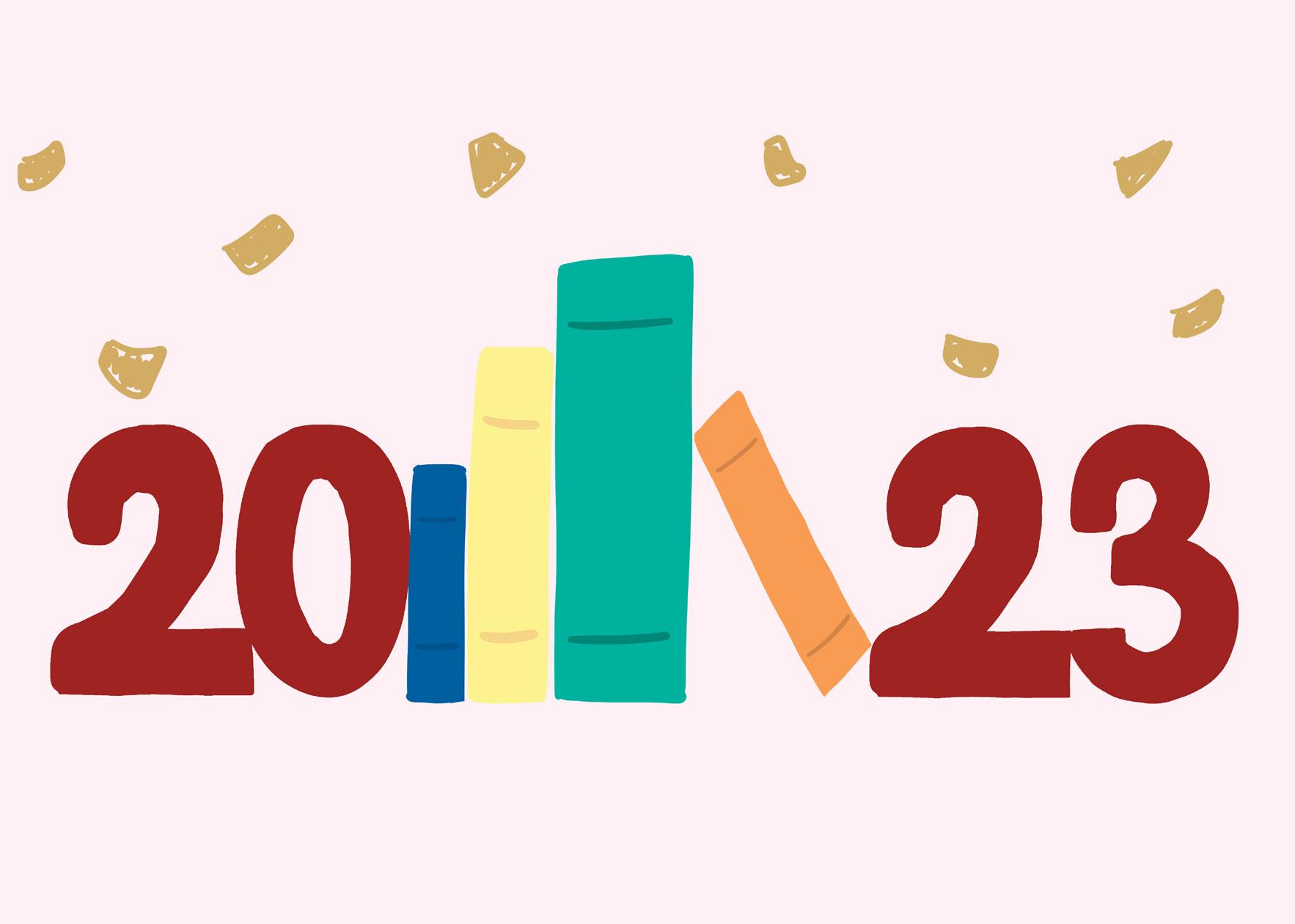 BY VIVI KIM arts@theaggie.org
BY VIVI KIM arts@theaggie.org
“The Man Who Was Thursday” by G.K. Chesterton (1908)
Genre: literary fiction, mystery
Taking place in 20th-century London, the story follows a series of characters’ unfolding mysteries. Gabriel Syme is a poet and detective who infiltrates a council of anarchists and begins to discover the hidden identities of its members, each of whom is named after a day of the week. This mystery thriller novel, which doubles as a biblical allegory, blends heavy symbolism and a clever plot with themes of philosophy and politics, making it a great pick for those who like a book that will keep them engaged and on the edge of their seats.
“The Design of Everyday Things” by Don Norman (1988)
Genre: psychology, business
How exactly do we know how to work a thermostat? Or to navigate the never-ending complexities of push/ pull doors? And what tempts us to buy Ikea furniture despite their virtually unreadable instruction manuals? In “The Design of Everyday Things,” cognitive scientist Don Norman draws on the subjects of psychology, management, engineering and cognitive science to explore these types of questions. The book breaks down the psychology behind our encounters with everyday objects and the fundamentals of design strategy, including everything from the inner workings of human cognition to
the optimal placement of faucet controls. Though it is heavily informational, the book itself is understandable and very informative, thereby serving as a useful tool for anyone interested in product design.
“The Code Book: The Science of Secrecy from Ancient Egypt to Quantum Cryptography” by Simon Singh (1999)
Genre: non-fiction, factual
As one can judge from the lengthy title, this book is truly just for those interested enough to read it, but I would recommend it nonetheless. “The Code Book” gives multiple fascinating accounts of codebreaking in history, explores the mechanics of cipher machines and dives into the math of ciphertext, encryption algorithms and more. Despite exhaustive lists of people, events and numbers in each chapter of this book, Singh’s detailed and dramatic storytelling approach to writing makes for an engaging experience. For anyone interested in ancient history, mathematics or cryptography, this book is most definitely worth a read.
“White Elephant” by Mako Idemitsu (2011)
Genre: biographical fiction
This fictional autobiography follows the life of Sakiko Morimoto, the youngest daughter of a prominent Japanese family. Seeking separation from the conservative ideals and
expectations imposed on her by her father, Sakiko moves to the United States in pursuit of a new life. Though this novel is not driven by any consistent plot, it shifts between different character perspectives and reminisces on impactful anecdotes. The story is a light and enjoyable coming-of-age novel that also hits on heavier themes like parenthood, family legacy, war, trauma and cultural division. But perhaps the best part of this book is the concise and compelling style of storytelling — Idemitsu highlights only the character’s most essential struggles while covering her life from childhood to motherhood and every time in between.
“Braiding Sweetgrass” by Robin Wall Kimmerer (2013)
Genre: biographical non-fiction
This non-fiction book is unique in its ability to blend casual storytelling with teachings of nature and cultural wisdom. It weaves through family anecdotes, traditions and mythological tales and offers profound insights into the modern world and our collective relationship with nature. From the planting, tending and picking to the braiding and burning of sweetgrass, each of Kimmerer’s lessons falls under a chapter named after the art. The book is full of reflection and is meditative in its style. I would recommend this to any nature writing enthusiasts.
The Arts Desk’s weekly picks for music, movies and more

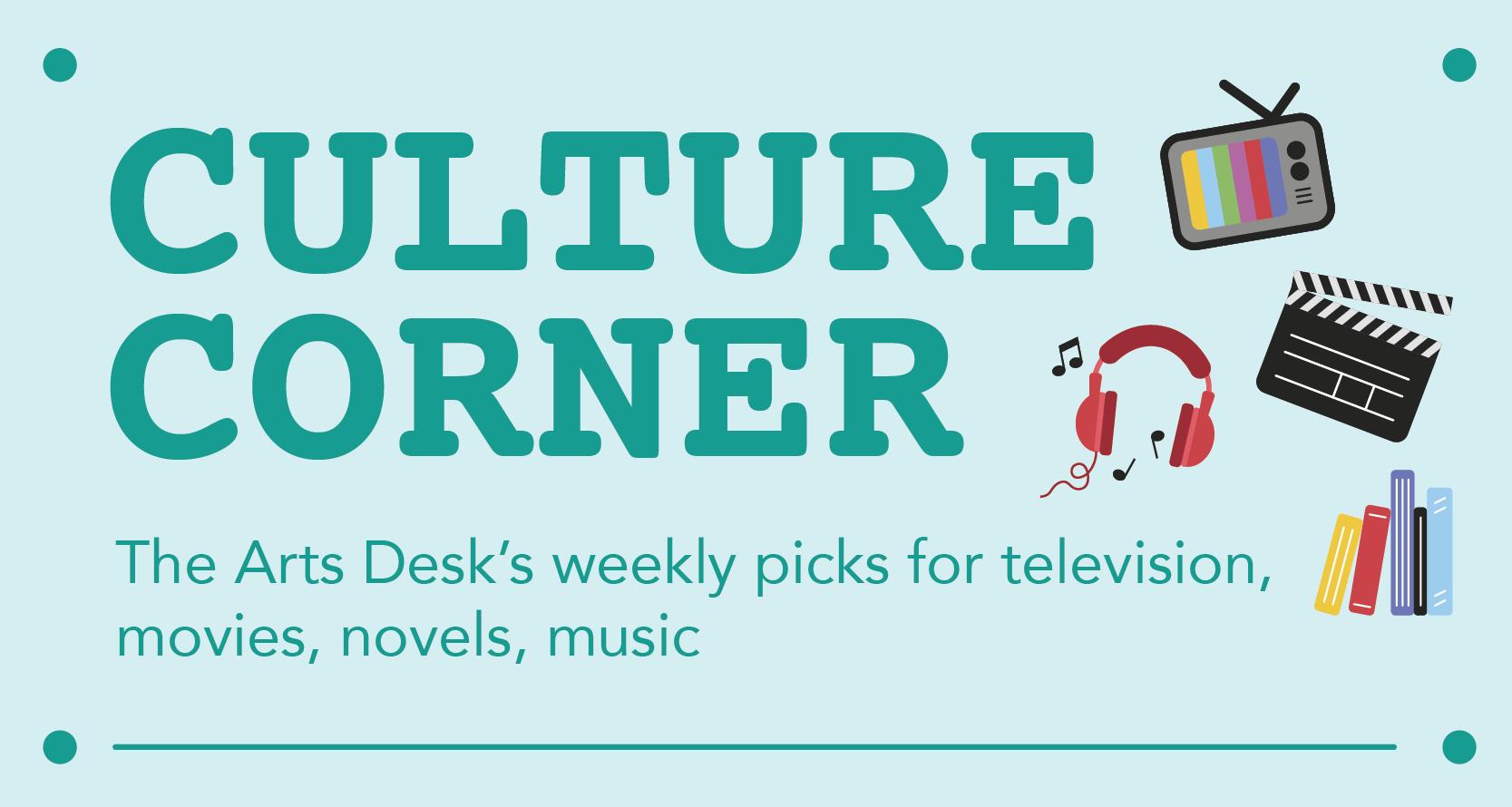

 BY CLARA FISCHER arts@theaggie.org
BY CLARA FISCHER arts@theaggie.org
Album: “SOS” by SZA (2022)
SZA’S debut album, “CTRL,” was formative during my teenage years, so it’s only fitting that her sophomore follow-up is ushering me into my twenties. “SOS” truly feels like a big sister album to “CTRL,” with the same soothing harmonies and mellow R&B-inspired beats but slightly elevated lyricism. The songstress takes us on a cohesive, harmonious journey through the turbulent emotions that come with breakups, makeups and the lonely periods of solitude in between. Standouts include “Love Language,” “Special,” “Gone Girl” and, of course, the TikTokfamous “Kill Bill.”
Song: “Did you know that there’s a tunnel under Ocean Blvd” by Lana Del Rey (2022)
After a somewhat disappointing last album, Lana Del Rey has returned with aplomb. “Did you know that there’s a tunnel under Ocean Blvd” is the singer at her best, with emotionally gripping lyrics, a beautiful vocal buildup and solid production. I will warn you though: this song did make my housemate and I cry during finals week studying, so listen at your own risk of emotional damage.
Movie: “How to Lose a Guy in 10 Days” dir. by Donald Petrie (2003)
If you’re anything like me, then you’re a sucker for a good rom-com — and this 2000s classic starring Kate Hudson and Mathew McConaughey ticks all the necessary boxes. Aside from stellar performances across the board, this film provides an escape from everyday life into the busy world of Andie Anderson, an aspiring journalist who is tasked with writing a piece detailing how to “lose a guy in 10 days,” and Benjamin Barry, a womanizing worker in advertising who is bet that he can’t make a woman fall in love with him by the next company party. The two meet, and naturally, fall in love despite all odds.
TV Show: “Jersey Shore” (2009-2012)

If there’s one show that my roommates and I can always agree on watching, it’s this classic reality TV hit. The antics of these guidos and guidettes, while usually problematic, is undoubtedly entertaining and makes for a great watch when you need to take a break from reality for a little bit. I highly recommend gathering a group of your friends and sitting down together for a good ol’ trip to the Jersey Shore.
ART THERAPY PAINTS A PICTURE OF IMPROVED MENTAL HEALTH
The practice provides a way to think without overthinking it
BY ANA BACH arts@theaggie.org
Modern society has made considerable strides toward breaking down the stigmas surrounding mental health. Though we still have a long way to go, it has become more socially acceptable to open up about mental health struggles and advocate for alternative forms of therapy to aid recovery than ever before.
Thanks to social media, it has become normalized to share personal experiences and the journey towards healing online, which has created a large community to help people of all demographics feel comforted in times of distress. However, there is still an undeniable sense of taboo regarding some mental health discussions that may make it difficult for people who need help to seek it.
For those who have difficulty opening up, practices that involve less thought with more reflection may be easier options, with one such practice being art therapy. In its simplest terms, art therapy is defined as a practice of psychotherapy that has little to no strict structure in terms of painting, drawing or making other forms of art.

I started practicing this style of therapy after seeing countless therapists by the age of thirteen and making little progress toward a better mental state. It helped to have an outlet that was free from any harsh instruction or constrained way of thinking. Art therapy gives me the ability to create something without a strict standard to hold myself to.
Watercolor is a common medium used in art therapy sessions and has
proven helpful in terms of building problem-solving skills because the paint creates amorphous structures that can be left up to interpretation. I typically would focus on one or two colors within the same palette and, as silly as it may sound, would just let the brush take control. Through this explorative endeavor, I discovered more about myself without the limitations of what was expected from me.
An article by the Canadian Counselling and Psychotherapy Association that goes into the psychological benefits of art therapy shares how the practice is extremely helpful for children in their developmental stages. Asa Don Brown writes, “A child’s empowerment occurs when they are capable of expressing their troubles, concerns, and challenges in a non-threatening, non-hostile, and noninvasive therapeutic session. When a child is empowered they are given a torch of emotional freedom.”
Art is a powerful tool for those who struggle with verbal forms of communication. It is a great way to make someone feel heard amidst all the noise in the world around us. This “torch of emotional freedom” is something that we rarely embrace and oftentimes shut down altogether in our adult lives if we were never taught how to be comfortable expressing our emotions in our adolescence.
In an effort to “explore my inner child” and reteach myself how to feel at ease when being benign and vulnerable, I often rekindle my practice of art therapy, using watercolor, pen, collage-
making and more. It feels good knowing that little mistakes can be turned into something better and more beautiful than anticipated.
Art is a practice that welcomes all. Everyone can create something, no matter their skill level, and that should be celebrated. I recommend trying
it out, and letting yourself harness the power to be the catalyst for your emotional freedom.
6 | THURSDAY, JANUARY 12, 2023 THE CALIFORNIA AGGIE
There’s no better way to start 2023 than with a healthy new hobby
MIRANDA LEE / AGGIE
MIRANDA LEE / AGGIE
COMMENTARY: YE’S FALL FROM GRACE: WHY THE ART CANNOT BE SEPARATED FROM THE ARTIST THIS TIME AROUND
Even amidst a double standard of scrutiny, this dangerous narrative must be condemned
BY RUMA POUDELL arts@theaggie.org
American rapper and fashion designer Ye, formerly known as Kanye West, has come under fire for a recent string of antisemitic and racist comments and actions.
These include instances such as the time Ye wore a t-shirt with the slogan “White Lives Matter” printed on it, which is an organization created to uphold white supremacy in response to the Black Lives Matter movement. He also voiced his false belief that George Floyd’s death, proven to be at the hands of law enforcement, was instead due to the drug fentanyl.
Most recently, he appeared on a podcast on which he claimed to “see good things about Hitler,” amongst other brazenly antisemitic comments. This blatant display of hatred led to many companies, colleagues and others publicly cutting ties with the 45-year-old musician.
“These kinds of horrible statements have no place in our public discourse,” said Kevin Johnson, the dean of the UC Davis School of Law. “[His actions] demonize and demean real people with real emotions, even if you can’t snuff it out.”
Ye was once a figure that many looked up to for his deeply personal music and cultural presence, as well as his lyrics that offered meaningful insight into race issues in the U.S. Having someone like this begin to perpetuate such hateful and violent rhetoric can be emotionally damaging for some.
In addition, certain reactions to his actions perpetuate the harmful notion that people with mental health disorders are “crazy” and something to gawk at rather than understand, empathize with and seek to help.
Ye has notably brought his bipolar disorder diagnosis into the public eye — a decision that has arguably shed light on the shortcomings of modern society in terms of understanding mental illness. Public perception of the rapper’s diagnosis is varied, with Ye himself even noting that “‘crazy’ is a word that’s not gonna be used loosely in the future.”

Those with an understanding of bipolar disorder may sense that his recent outbursts might be a result of a manic episode and might show a dire need for medication or counseling. However, his mental health disorder should not be an excuse for his offensive actions and use of discriminatory language. Some mental health experts have stated that mental illness does not excuse harmful behaviors, especially on such a large scale; it simply provides some explanation for why someone may be acting a certain way.
Likewise, just as it is vital to be sensitive when discussing mental health concerns, it is also critical to consider the increasingly dangerous implications these episodes can have on others.
“We’ve seen [...] other related areas where hate speech can also lead to hate violence,” Johnson said. “We saw President Trump target Chinese people using racist tropes and stereotypes. After that, we saw a great increase in hate violence directed at Asian Americans.”
So, what can we do to challenge this rhetoric? Well, according to Johnson, both individuals and businesses can choose to disengage with the artist’s content.
“If you don’t like the language of a
particular artist, one way of registering that objection is through taking your business elsewhere,” Johnson said.
Following this line of thought, Adidas has cut brand deals with Ye, and so have other influencers, partners and even banks — but what about what we can do as individuals?
“It’s really a gray area,” said Yuri Khadka, a second-year law student at McGeorge School of Law. “Separating art from the artist boils down to personal morals; we can be wary of technical validity for his actions and claims and how it can be used to cover up bigotry.”
The pushback against Ye is justified, but it also raises a question: why does society seem so quick to push back against African American public figures when they come to face criticism?
“In some ways, it seems interesting to me this comes around the same time as Kyrie Irving’s suspension for similar hateful comments,” Johnson said. “It is the case that the people who seem to be subject to punishment and attack right now are African Americans, when others use similar distasteful language and don’t suffer repercussions; President Trump being one of them.”
While Ye may be entitled to his own perspective, there is a difference between an opinion and dangerous hate speech. Hopefully, given the severity of the comments made by him in the past few months, we will see increased backlash from the public. This kind of violent and outright dangerous narrative should not be accepted, regardless of how talented the person propagating it is.
LOST IN TRANSLATION: A MISSED OPPORTUNITY IN “1899”
BY ADHITHI ANHJALI arts@theaggie.org
From the creators of “Dark,” a surprise German hit that arguably opened Netflix’s door to more international media, Jantje Friese and Baran bo Odar return with “1899.”

Best described as opaque, dreary and guarded, the show’s most intriguing aspect — beyond the sci-fi timeweaving — is its international cast and multilingualism carried throughout.
Aboard the Kerberos, the show follows a large cast of immigrants seeking a new life in the United States. Twenty years prior to the famously tragic sinking of the Titanic, the Kerberos sets sail only four months after its sister ship, the Prometheus, has seemingly vanished from the face of the Earth. The echo of the lost ship haunts the cast and conversations in French, Spanish and German center around this topic. In the bellows of the ship, viewers hear Danish and Polish, while in first class we see a Geisha whisper in Cantonese, signaling the first of many false identities on board.
Focusing on the use of language, the story initially presents itself as a fundamentally new and exciting experiment — how many other shows have recently appeared on Netflix’s Trending Top Ten that incorporate more than two languages?
Combining the inability to effectively communicate with the unease of a mystery bolsters the thrills of secrecy and staves off resolution for the characters. Amidst the backdrop of the massive immigration from Europe into America at the turn of the 20th Century, the funneling of diverse languages onto one ship also represents the universal understanding of the American mythos of freedom from the past.
Consistent with the style of other dramas that feature large casts, each episode focuses primarily on one character’s life on the Kerberos and the sordid past that has led them there.
Repeated ad nauseam by Spanish playboy Ángel, played by Miguel Bernardeau, everyone on the ship is wearing a mask, either forced upon them or taken up to protect themselves.
However, the force of language is a superficial one, despite its potential.

The other aspects of the show are quite well done; the cinematography is eerily effective, using close-ups of fine details to urge the audience to question the tangible truths about the characters. The story itself, though at times trawling through its required screen time, is engaging enough that the truth unravels in a satisfying way, all the clues clicking into place and making a rewatch an enjoyable experience. But, in a sci-fi drama so concerned with the function of the brain and its ability to comprehend, even opening with Emily Dickenson’s “The Brain—is wider than the Sky—,” the opportunity to accentuate the power of language as equally a bridge and a wall for the mind was sorely missed.
Rather than exploring language as the construction of the human mind, by the time the assorted characters group up, barriers are overcome by individual translators. This undermines the challenges posed by such a unique setup, where the inability to translate their reality into shared words would have supported its fundamental concern: whether or not there is a certain, discernable truth.
The producers of “1899” could have chosen to touch on more topics to give the show more depth. For example, linguistic theories of generativism, which argue for a universal grammar that would allow for easier language acquisition, and cognitivism, which claim that language is a conceptual system based on its use, could have played an interesting role.
It would be misleading to argue that “1899” is primarily about language. It is about grief and time, and the dangers of trapping yourself by trying to escape them. Ultimately, the show leaves viewers questioning the inclusion of the broad display of languages in the first place, given that the whole cast eventually yields to the language of Maura (Emily Beecham) as the protagonist.
Unfortunately, the distinctive decision to incorporate so many languages feels like a gimmick in its first season. Hopefully, if renewed for a second season, “1899” takes advantage of the boundaries it chooses to set.
THE CALIFORNIA AGGIE THURSDAY, JANUARY 12, 2023 | 7
Despite interest in multilingualism, Netflix’s newest international foray fails to make an impact
Theatrical release poster of 1899. (Courtesy of Netflix / fair use)
Kanye West performing at Lollapalooza Chile on April 3, 2011 in Santiago, Chile.(Courtesy of rodrigoferrari / Creative Commons, CC BY 2.0)
The U.S. News and World Report’s official statement on several law schools leaving the rankings states that the ranking will include all accredited law schools, including schools not submitting data. These schools will be ranked using publicly available data, whether or not the schools respond to their annual survey with more in-depth information.
“The U.S. News Best Law Schools rankings are designed for students seeking to make the best decision for their legal education,” the statement reads. “We will continue to pursue our journalistic mission of ensuring that students can rely on the best and most accurate information, using the rankings as one factor in their law school search.”
On Jan. 2, the U.S. News and World Report published a letter to law school deans announcing modifications to the 2023-2024 ranking system based on feedback they’ve received.
According to the letter, some of the main changes include an increased
IMAGININGAMERICA
CONTINUED FROM PAGE 2
“I think probably the part that was most eye-opening was [that] the types of engagement showcased at the conference are very often not determined by a western United States perspective or a white hegemonic perspective,” Raya said. “There’s engagement through music, through listening to the land, through art or clay [...] That was really exciting, to have all of these different forms of engagement and knowledge production recognized.”
Inspired by the theme of this year’s National Gathering, Rituals of Repair and Renewal, Imagining America is hosting its second Mail Art Project. Registration to participate in the Mail Art Project is open from Nov. 10 to Dec. 16. Participants will then have until April to create their art pieces. The Mail Art Project encourages participants, as they create their art, to reflect on the question: “What rituals (embodied, mundane, communal, reflective, energizing) have been part of your personal or communal experiences of repair and renewal?”
From April 15 to 30 in 2023, participants will submit photos of their art in addition to a description and their reflections. The artistic efforts and
LOWTURNOUT
CONTINUED FROM PAGE 3
Fujimoto went on to raise another idea, which is not a current plan in motion but is one that he has affirmed his support for. According to Fujimoto, UC Santa Barbara has a 20% voter turnout requirement for all student government elections to be considered valid — and Fujimoto said that he believes a similar widening of the turnout requirement would increase the effort that candidates put into advertising the election.
“We have a turnout requirement for initiatives involving student fees,” Fujimoto said. “Maybe we explore something like a turnout requirement for all races. If it meant that to get a position, we needed a [specified] voter turnout, I am sure that candidates
DISABILITYCENTER
CONTINUED FROM PAGE 3
”Our goal is not to create a barrier for students and try to make it work,” Bill said. “And when things aren’t great, we ask students to come back to us. I would just like to emphasize […] that we work with a broad range of disabilities. So our goal is to assist students and provide support so that their academic
TICKETMASTER
CONTINUED FROM PAGE 5
When Live Nation merged with Ticketmaster in 2010, the conglomerate took control of the entire live entertainment industry. Now, smaller entertainment ticketing companies have no shot at competing with Ticketmaster due to the sheer power they hold. This allows Ticketmaster and Live Nation to continue to tack on fees and raise ticket prices without worrying about the possibility of entertainers shifting their ticketing contracts elsewhere.
Ticketmaster’s mishandling of ticket sales for Taylor Swift’s upcoming tour has led politicians to call for the breaking up of the Ticketmaster-Live
weight on outcome measurements, such as bar exam pass rates and employment outcomes, as well as increasing the weight given to school-funded fulltime long-term fellowships in order to encourage public service careers.
The letter also cited concerns that they have not addressed in this year’s modifications, including loan forgiveness, diversity and need-based aid, saying that these areas “require additional time and collaboration to address,” and that they will continue to collaborate on “metrics with agreed upon definitions.”
The U.S. News and World Report went on to directly ask the law schools that have pulled out of submitting data to reverse their decision.
“We call on all law schools to make public all of the voluminous data they currently report to the [American Bar Association] but decline to publish, so that future law students can have fuller and more transparent disclosure,” the letter reads.
The NYT article and associated investigation, according to Mitloehner, did not find him or the center to have violated any funding disclosure requirements set forth by university agencies. Mitloehner emphasized that this adherence to disclosure requirements is something he and the center focus on and what he believed to be at the heart of the NYT investigation.
However, Caspar Donnison, a postdoctoral student who researches climate change mitigation at UC Davis, said that he believes there is a more serious issue than simply funding disclosure rules. Mitloehner currently has Donnison blocked on Twitter following what Mitloehner described as “personal attacks” from Donnison.
“Many scientists work with industry and receive industry funding — that is not the central issue,” Donnison said. “The important thing is to manage that relationship to ensure that science is done objectively. However, this investigation found that Dr. Mitloehner and the CLEAR Center have a close relationship with agribusiness funders who provide input on the research and communication priorities of the industry. It’s a clear conflict of interest.”
While writing the “Unearthed” article, Boren used Freedom of
Information Act requests to gain access to several documents that Donnison said reveal a more complex relationship between the CLEAR Center and the industry.
“Some [of the documents Boren received are] published online and I’ve seen them,” Donnison said.
“This is more than industry-funded scientific research: there are extensive communication activities and a social media approach which is consistently pro-industry.”
In the “Unearthed” article, Boren concluded that based on the documents, the center’s structure was formed through collaboration between UC Davis and an offshoot of the American Feed Industry Association (AFIA).
“The documents show how, under the terms set out in this agreement, industry groups have committed millions of dollars of funding for CLEAR’s work,” the article reads. “The centre has [also] committed to maintaining an ‘advisory board’ of 12 of its agribusiness.”
Mitloehner, however, said that his communication and involvement with the industry is standard practice for positions like his.
“I’ve found it just disheartening that an outlet like The New York Times
criticized me for working with the very industry that I seek to improve,” Mitloehner said. “That is my job — to study the impacts of livestock and ways to reduce them [... and] communicate those findings with the sector and with the public at large. It has really personally hurt me a lot because they make it sound as if there is something wrong for an agricultural scientist to work with agriculture to reduce emissions.”
Following the publication of the recent articles, a petition was created by a group of climate activists from People for Climate Change Truth. The online petition, which has over 600 signatures, calls for a third-party investigation of Mitlohner’s research.
Donnison expressed similar sentiments to the petition, stating that the university should more carefully examine Mitloehner’s research practices.
“I think this is a really important issue for our university because it challenges our integrity and I think it also risks undermining the actions needed to address climate change,” Donnison said. “I do think the university leadership needs to take a close look at this because it is our university name attached to activities at the CLEAR Center.”
participation of community members will be showcased and celebrated online by June 2023.
“I’ll just share a quote that I think really gets at, ‘Why now, why this topic?’” Van Schyndel said. “The quote is from bell hooks … ‘Rarely, if ever, are any of us healed in isolation. Healing is an act of communion.’ I think this idea of healing was an important one.
Whether we’re talking about healing from the trauma of the pandemic, healing from the racial violence across multiple racial groups [...] there’s been a lot of trauma that folks have experienced over the last several years. It felt important to think about the ways we are trying to heal.”
UC Davis staff, students and community members are all welcome to participate in the Mail Art Project.
According to Van Schyndel, the event is an opportunity for people to engage with art with a collective goal of community healing and growth.
“I think it’s important for us to tap into the creative parts of ourselves,” Van Schyndel said. “Art-making as a way of generating new knowledge, new insights, new reflections about a topic is really powerful.”
CAVINESS
CONTINUED FROM PAGE 2
“I had identity categories and attributes about myself that I think were more palatable to the military, that were less threatening,” Caviness said. “I think being a white woman who is cisgender sort of fits into the military mold in terms of appearance and demeanor and ability to adhere to or conform to its standards. That made me sort of an ideal worker in some ways for the military.”
Despite this, the stress of having to hide a part of herself and of having to keep a relationship a secret eventually led her to the decision to disclose her sexuality to the military.
“It felt like not just a burden to me; […] it felt like I was also putting [my partner] through that situation as well,” Caviness said. “My sense was that I couldn’t really do the sorting out in terms of identity that I needed to do in the confines of the military — in terms of mental health, for example.”
military would be ignoring her claims and would allow her to continue to serve, which she wasn’t willing to accept.
“I continued to push the issue. I wrote a letter to the commander and said, ‘I understand that you choose not to discharge me on this basis, which is fine, but you will know that I will serve openly.’”
After this, the military moved forward with her discharge. But Caviness said she faced retaliation because of her coming out. She was put on two 24-hour security shifts in a row when it would normally be on rotation, and she said she wondered if that was intentional. She also, for the first time, experienced an act of violence, which she said she suspects came from a place of hate or homophobia.
called slurs by fellow service members shortly after coming out.
Moreover, it is still possible for policies restricting military service for LGBTQ+ people to be implemented. In 2019, Trump instated a ban prohibiting transgender people from enlisting, according to NBC News. The policy is no longer in effect as of 2021.
It was only after Caviness left the military that she was able to be fully herself. She recalled a sense of freedom and relief because she no longer felt the constant anxiety that was part of her military experience.
After Caviness completed her master’s degree at Texas State University, her partner at the time, to whom she is now married, helped her move to California to complete her Ph.D. at UC Davis.
would be very eager to raise awareness. I am definitely curious to see if that would be something that students want their elected leaders to pass.”
Fujimoto concluded by emphasizing why he believes it is important for students to take the time to vote in ASUCD elections.
“We make decisions that affect you,” Fujimoto said. “Whether you vote for us or not, we are the final say for how an $18 million budget is allocated and spent, which includes fees collected from students. We are also trying to represent and speak on behalf of you, so if the voter turnout is low and we are not in line with what the student body wants and what they think is right, that is going to be an issue.”
But the process for being discharged was not an easy one. Caviness had to first answer a series of questions in front of military leadership. She said they were looking for proof that she was telling the truth about her sexual orientation. But she was careful to give very few details.
“I had done enough research to know that disclosing certain specifics would be more likely to […] grant me a dishonorable discharge or something other than honorable,” Caviness said. “I refused to answer those questions because that felt really invasive and could be used against me.”
Caviness said she was told the
SENATE
CONTINUED FROM PAGE 3
“After I had disclosed to the military and my separation had begun or was in the works, I was living in the barracks, and my car was vandalized,” Caviness said. “It was bashed with a blunt object and there was something sprayed all along the side. […] Maybe soda or something? But it was like this sticky mess all over the side of the car.”
When “Don’t Ask, Don’t Tell” was repealed, Caviness said she felt relieved that others would not have to experience the same challenges that she did. But unfortunately, despite LGBTQ+ members of the military being able to openly serve, the culture that creates a hostile environment for them still remains. For example, in a New York Times article, Necko Fanning describes receiving death threats from and being
“We drove my little hatchback from Texas to California almost straight through,” Caviness said. “I think it took two days, and we had two cats in the back. That was wild.”

Caviness went on to become a lecturer at UC Davis. In her classes, Caviness shares a message of hope with her students.
“You don’t have to have it figured out,” Caviness said. “Things will not necessarily get easier […] but everything is temporary. And there does seem to be some sort of light at the end of the tunnel in a way, even though it doesn’t seem like it. And one day you’ll care so much less about what other people think, and it’s the most freeing feeling.”
experience isn’t disrupted.”
Correction: A previous version of the headline incorrectly stated that the Student Disability Center provides transportation accommodations. It has been updated accordingly.
Following public comments, several quarterly reports took place. The Campus Center for the Environment, the Mental Health Initiative, the Office of the International Student Representative, the Research and Data Committee, the Judicial Council and the Unit Relocation and Space Allocation Committee all gave presentations on the work that their respective organizations have completed over the quarter.
The Mental Health Initiative specifically outlined that they collaborated with MannMukti to raise awareness for National Men’s Mental Health Awareness month in November and that they are looking forward to their upcoming Mental Health Conference, which will take place on Jan. 21-22, 2023.
These translations are published on the Unitrans website. They plan to continue their translational work for ASUCD units in the coming quarter.
The Judicial Council highlighted current challenges that they are facing as a body, which primarily involve understaffing. According to the report, they need a clerk and more members to more efficiently get through all legislation in the future.
Following quarterly reports, the Senate table moved on to consider legislation. With the vacancy on the Judicial Council finally filled, a vacancy which had delayed the consideration of legislation in previous meetings, several pieces of legislation were voted on.
SB #39, which clarifies the scope of the Aggie Housing Advocacy Committee, was passed unanimously.
a quarterly report, was passed unanimously.
SB #35, which amends the Elections Code to specify the roles and responsibilities of the election officer, was passed unanimously.
SB #36, which ensures compliance with the Constitution on the timeline of spring elections, was passed unanimously.
Because the meeting was running an hour and a half behind schedule, Senator Stephen Fujimoto moved to amend the agenda so that the considerations of SB #37, SB #40 and the DRIP II amendment were postponed to the next regularly-scheduled Senate meeting.
“People are tired,” Fujimoto said, “I do not think that in this state of mind [we] should be considering bills.”
Nation monopoly. Rep. Alexandria Ocasio Cortez tweeted that the merger “should never have been approved” and called on lawmakers to “reign in” the power of the conglomerate.
While I am very grateful that I was able to secure tickets for Swift’s “Eras” Tour, I feel for those who never had a chance. Ticketmaster, with the continuous issues and fees, acts as a barrier to live entertainment for many.
Live entertainment is a place where people can go to feel connected to both the entertainer and their craft. Artists, politicians and consumers must work together to make it more available to all.
The Office of the International Student Representative said that this quarter, they hosted an international student welcome panel, orientation and roundtable. They also completed translations of Unitrans bus-boarding directions in Japanese and Korean.
SB #41, which clarifies the fair use of injunctions by the Judicial Council on legislation and actions, was passed unanimously.
Emergency SB, which exempts The California Aggie from submitting
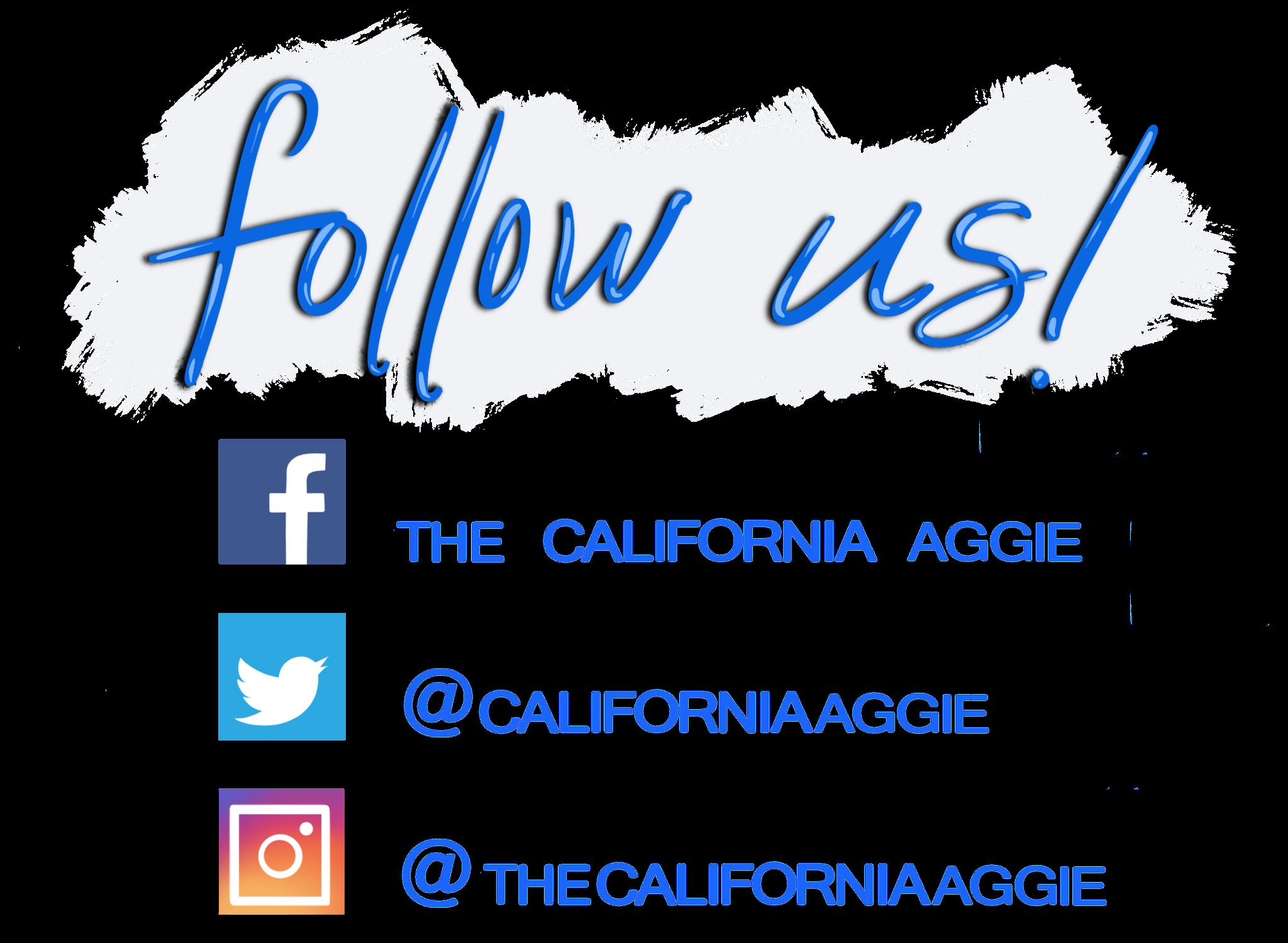
With seven members voting in favor of amending the agenda, two voting in opposition and three abstaining, the motion was approved.
Eden adjourned the meeting at 12:42 a.m.
8 | THURSDAY, JANUARY 12, 2023 THE CALIFORNIA AGGIE
ANIMALSCIPROF CONTINUED FROM PAGE 1
LAWPULLSOUT CONTINUED FROM PAGE 1




THURSDAY, JANUARY 12, 2023 | 9 THE CALIFORNIA AGGIE
to 9
the
and
be
previous puzzle 12/1/22 CROSSWORD r edu c e . r eu s e . r e cycl e . T h e a gg i e
to
puzzle 12/1/22 Scan to upload your completed crossword for the chance to win a prize!
SUDOKU Enter digits from 1
into
blank spaces. Every row, column
3x3 square must contain each digit. Each Sudoku has a unique solution that can
reached logically without guessing. Answer to
Answer
previous
TWITTER NOW RUN BY SINGLE EMPLOYEE IN WISCONSIN BASEMENT
Meet Jeff, Twitter’s newest (and only) employee
BY ANGIE VELARDE avelarde@ucdavis.edu
After a series of unprecedented layoffs, resignations and terminations, Elon Musk’s latest purchase is now in the hands of one man: Jeff — a recent college graduate, Dungeon Master, video game enthusiast and now Twitter’s most important employee. According to Jeff, the position was described as “Social Media Management,” but he was unaware that the position he applied for would involve the dayto-day operations and management of an entire social media platform.
“I’m learning as I go,” Jeff said. “I’m just trying to do what Elon wants. But it’s hard sometimes when you’re getting text messages in the middle of the night saying things like ‘charge per Tweet.’ Then I have to figure out what that means and how to do it.”
The text messages from Musk, Jeff says, are frequent, often coming at all hours of the day and night and rarely including specific instructions. But as Twitter’s only employee, all communication flows through Jeff.
While it has come with complications, the mass exodus of all other employees at Twitter means that he can now work from the basement
mean, first, I’m running an entire social media platform of almost half a billion users single-handedly. But also, company birthday parties have gotten really lonely.”
Jeff was, in fact, the only attendee at the recent company party held for his 21st birthday. However, he was quick to note that Musk attended via video chat and even wore his own party hat for the occasion.
With the rate at which advertisers, as well as paying and non-paying users, are dropping their Twitter accounts, Jeff is not expecting to be employed for long. However, he says that if nothing else, he is grateful for the ride. He also mentioned that he wouldn’t mind participating in Musk’s next failing business venture — whatever that may be.
ASK ANNIE
An inspiring advice column for students at UC Davis!
BY ANNABEL MARSHALL almarshall@ucdavis.edu
Disclaimer: This article has been edited for content and clarity by our editor Owen Ruderman in order to ensure it follows the University of California, Davis’s Principles of Community.

Q: I’m really worried about my first quarter of organic chemistry. Any tips?
A: Owen, I know you’re there, you cheeky piece of [redacted]. Don’t even think about [judiciously and fairly editing] my [admirably passionate, albeit slightly indecorous] paper. This is my article, and I won’t have it censored by some absolute [person] who can’t tell the difference between his face and [As this part goes on for several pages, the editor has decided to cut this section from the article]. This is about freedom. This is about America. And I’ll let a bald eagle [redacted] my [redacted] before I have some [redacted] English major [censoring] my [speech].
Q: I’m having trouble finding my TA’s office hours. Can you give me any tips?
of his home in Wisconsin.
When asked how he feels about being Twitter’s sole employee, Jeff replied, “It can be really hard. I

BIKE RACING
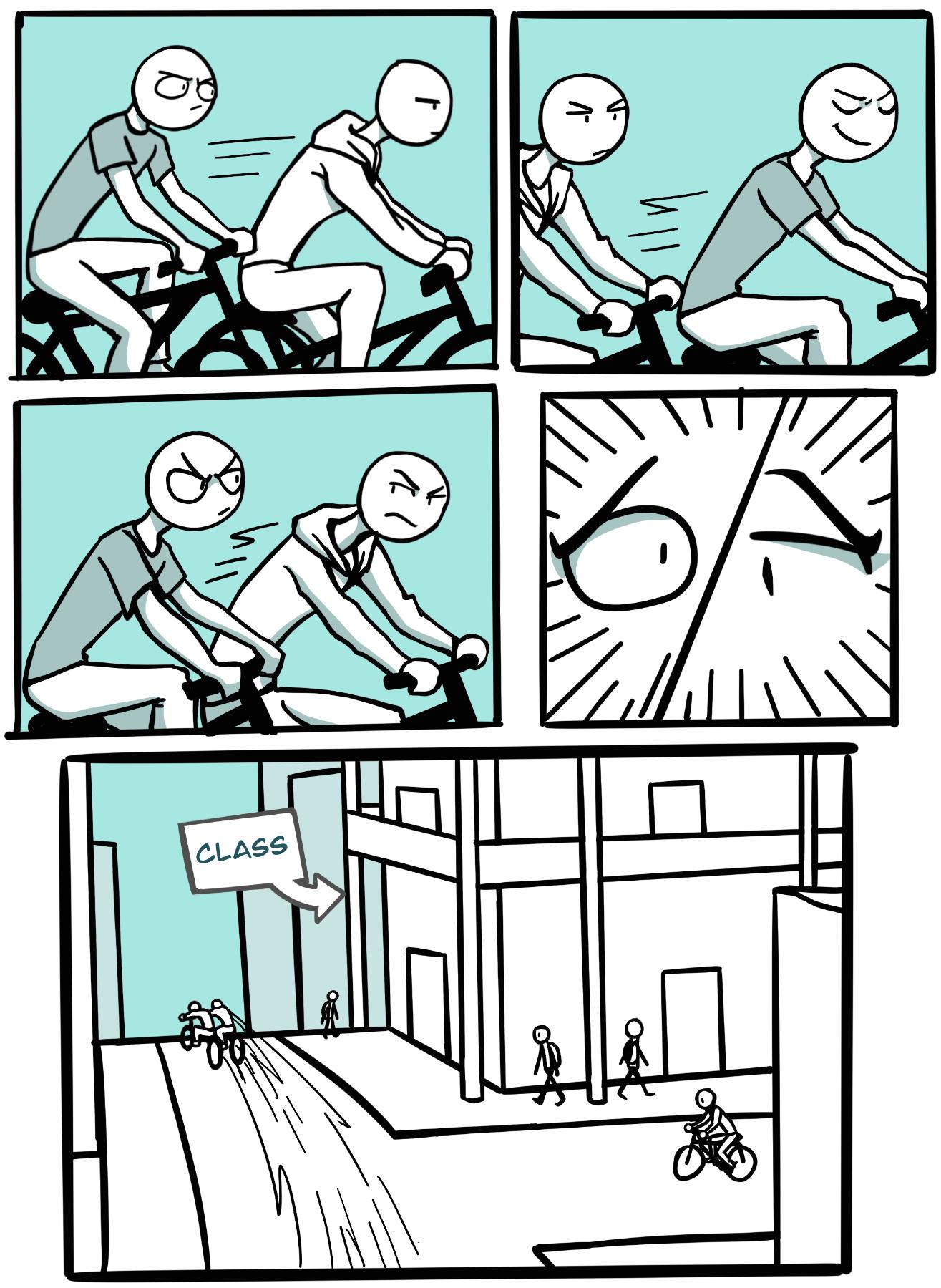 BY LIDYA SHCHERBAKOVA lvshcherbakova@ucdavis.edu
BY LIDYA SHCHERBAKOVA lvshcherbakova@ucdavis.edu
Disclaimer: This article is humor and/or satire, and its content is purely fictional. The story and the names of “sources” are fictionalized.
The people are coming to me for advice. Me. No one wants your stupid advice on prepositions, predicates and Oxford commas. And you better leave that [redacted] Oxford comma in, b[uttersco]tch. I am a warrior of the people. I am a god. I will come to your tiny, little office and decapitate your bobbleheads. I know where you live because I asked Sarah, and she thought I was dropping something off, but secretly I was planning because I’m going to [As this part goes on for several pages, the editor has again decided to cut this section from the article].
A: I don’t know, [friend]. Why don’t you go to your [fascinating] classes and [finally] find out, you piece of [sunshine]. The only tip I’ll give you is the tip of my [hat] as I [regard] your mom in thhe [morning]. Get out of here with your [interesting] questions. This isn’t Gogglo [The editor assumes the author intended to write “Google,” a very common and relatively easy word to spell but out of respect for their writing, chose not to make an edit].
Q: What is the best frozen meal from Trader Joe’s?
A: Mac and cheese. [I agree.]
Disclaimer: This article is humor and/or satire, and its content is purely fictional. The story and the names of “sources” are fictionalized.
10 | THURSDAY, JANUARY 12, 2023 THE CALIFORNIA AGGIE
HUMOR
Disclaimer: This cartoon is humor and/or satire, and its content is purely fictional. The story and names of “sources” are fictionalized.
KELLIE LU / AGGIE
NATALIE CHENG / AGGIE
DISEASE-RESISTANT CORALS CAN SAVE NEARBY SUSCEPTIBLE ONES FROM INFECTION
Mixing DNA genotypes at coral nurseries can help prevent disease outbreak and spread
BY LILLY ACKERMAN science@theaggie.org
A recent study from the UC Davis Department of Evolution and Ecology has found that placing corals of different genotypes together at a nursery can improve the population’s overall resistance to disease.
The study researched the prevalence of white band disease, which has been affecting corals in the Caribbean for several decades, in both resistant and susceptible corals at a nursery offshore of
the Central Caribbean Marine Institute in the Cayman Islands. It found that disease-resistant corals can prevent the spread of disease to susceptible corals they are attached to.
The staghorn corals (Acropora cervicornis) at this nursery are crucial reef-building corals in the Caribbean, but their populations have seen steep declines due to disease outbreaks since the 1970s, according to Dr. Anya

“[White band disease] is still present today and affecting the acroporid corals in the Caribbean, and often, the acroporid corals are the ones that are used in reef restoration,” Brown said.
Nurseries are a crucial part of reef restoration, as they grow corals of a
variety of genotypes, but they are subject to disease outbreaks just as wild corals are, according to the study.
The authors compared disease prevalence on a variety of plastic frames that the nursery used to hold growing corals; some held coral fragments of mixed genotypes, while others contained corals of only one genotype. The study found that frames with mixed genotypes experienced less infection with white
band disease.
“Some of the corals that are vulnerable to disease can be ‘rescued’ by resistant genotypes, likely because resistant genotypes prevent the transmission of the disease between fragments,” the study reads. “In fact, when the resistant genotype was present on a frame, disease prevalence […] tended to be lower than on other mixed genotype frames when the resistant genotype was absent.”
This finding is critical so that nurseries can encourage the maintenance of both resistant and susceptible corals in the population and manage disease spread among them.
“Disease is one of the many different factors that are impacting corals negatively right now, so [a coral] that might be susceptible to disease may have other traits that are helpful for other types of stressors,” Brown said. “Keeping the genes of both susceptible and resistant corals in the population or on the reef will be important for future stress experiences.”
According to Dr. Brown, the study also provides insight into effective nursery design and the mechanisms of disease spread, both of which need to be taken into account when raising corals for reef restoration.
“Thinking about how you arrange the corals intentionally can influence their survival or their ability to be diseased or not diseased,” Brown said. “This is giving us also just a better idea of…the processes that influence disease spread on reefs; what might limit disease spread and what might not limit disease spread.”
In the effort to solve the coral conservation puzzle, this study is a step in the right direction.
“I think there’s a lot we don’t know about coral diseases and their spread on reefs, and so this is a start for our understanding of these population-level processes,” Brown said. “It’s nice that not everything is doom and gloom.”
UC DAVIS HEALTH CARDIOLOGISTS INCORPORATE NEW 4D HOLOGRAPHIC SOFTWARE ALONGSIDE SURGERY
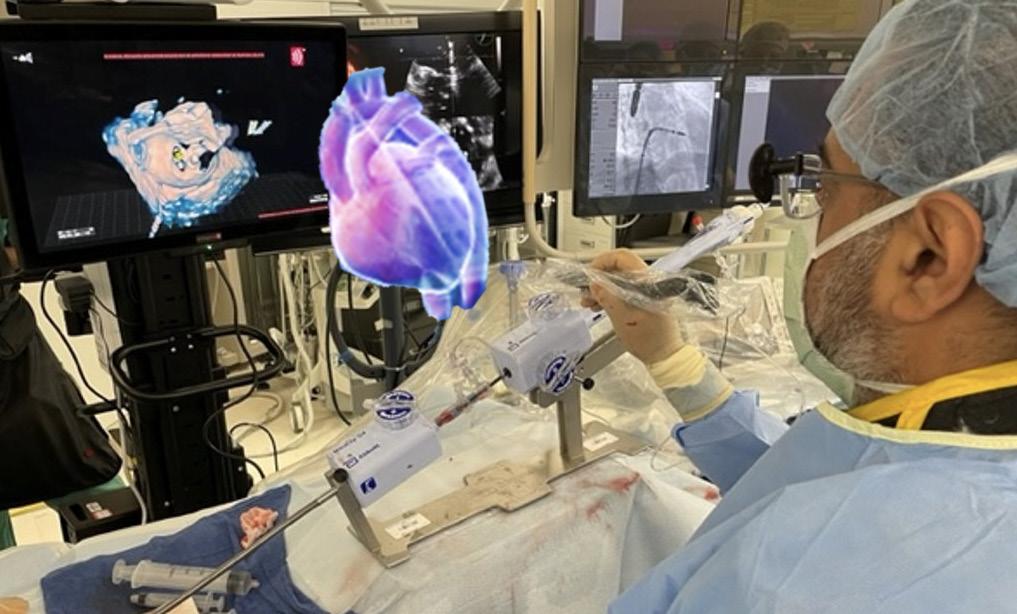
EchoPixel’s Holographic Therapeutic Guidance allows physicians to view and manipulate a 3D map during procedures
BY BRANDON NGUYEN science@theaggie.org
For the first time, UC Davis Health surgeons conducted a heart procedure technologically assisted by EchoPixel’s 4D holographic software called Holographic Therapeutic Guidance (HTG). According to the company’s website, their “software platform is the first turnkey solution that enables physicians to use a digital twin of a patient using standard medical images and experience it as a 4D interactive hologram.”
Dr. Gagan Singh, an interventional cardiologist and Director of the Cardiology Fellowship Training Program at UC Davis Health, performed a MitraClip procedure, which involves
fixing a leaky mitral valve of the heart and restoring normal blood flow.
“The MitralClip procedure was designed — while the heart is still beating — to be performed with what’s called a transesophageal echocardiogram,” Singh said. “So the patient is usually sleeping under general anesthesia and this ultrasound goes down the esophagus and takes a look at the heart from behind. That provides us with the real-time imaging that we need as we bring this clip in with a catheter to put it on the mitral valve and cut the leaking down.”
The MitralClip procedure does have disadvantages. Specifically, with
the echocardiogram, Singh would view multiple two-dimensional images and have to piece together a mental 3D diagram of the patient’s heart while conducting the procedure. With EchoPixel’s new holographic software, however, this would no longer be a problem.
“So this software is a hologram, portraying in real-time the patient’s heart while it’s beating, and you can crop out the part of the heart that you’re really interested in,” Singh said. “You have the device in there at the exact same time while doing the procedure, and I’m no longer relying on an echocardiologist to do all the manipulation. I actually
have a little stylus that I can move the heart around in space and crop away the roof of the left atrium, which is where the mitral valve is located, and really look down and make appropriate manipulations of my imaging to really understand what I’m doing.”
Singh further discussed the impacts technology like this would have on centers across the country.
“The ultimate hope is that what people don’t have to do is […] take a series of 2D images and then create a map in their mind,” Singh said. “You just have a 3D map in front of you, and you’ve leveled the playing field for a lot of these centers across the country who
still struggle with that mental mapping.”
While this 4D assistive software has revolutionized surgical operations for Singh, he cautioned against impulsively jumping to reliance on this technology as the hologram is still in its early stages of development. Factors like the software’s image resolution and enhancement of the current standard of care whether it would match the current standard of care of the MitralClip procedure still need to be studied and enhanced.
Nonetheless, the rise of EchoPixel’s HTG shows promise of technological enhancements in the operating room for many surgeons, including Singh and his team at UC Davis Health.
THE CALIFORNIA AGGIE THURSDAY, JANUARY 12, 2023 | 11
SCIENCE AND TECH
Brown, an assistant professor in the Department of Evolution and Ecology at the UC Davis Bodega Marine Laboratory and lead author of the study.
to better
procedure. (UC
Health /
Coral species show signs of white band disease. (Dagny Anastassiou / Courtesy) Dr. Gagan Singh
uses EchoPixel’s new holographic software
understand patient’s heart during MitraClip
Davis
Courtesy)
MLB FREE AGENTS ARE SIGNING RECORD-BREAKING CONTRACTS
BY PATRICK FIGUEROA sports@theaggie.org
The 2023 Major League Baseball (MLB) offseason is shaping up to be one of the most memorable in MLB history, featuring a star-studded free agency class that is signing new contracts quicker than in recent years, and these signings will most definitely have an impact on the future of MLB.

Starting pitcher Jacob deGrom was one of the first star free agents to sign. He signed a five-year contract worth $185 million with the Texas Rangers. The Rangers want to compete among other American League (AL) contenders, and by signing deGrom, they added an ace to their pitching rotation that can help them do so.
Outfielder Aaron Judge bet on himself earlier this year, rejecting a seven-year, $213.5 million contract offer from the New York Yankees before the 2022 regular season began. Judge seems to have made the right choice, as he has now signed a nine-year contract worth $360 million with the Yankees this offseason.
Judge’s services were in high demand after a phenomenal 2022 season. The San Francisco Giants and San Diego Padres were among the other bidders for Judge. The Giants reportedly offered around the same amount of money as the Yankees while the Padres offered a 10-year contract worth $400 million. Ultimately, Judge decided to re-sign with his former team.
Shortstop Trea Turner will return to the East Coast after signing an 11-year contract worth $300 million with the Philadelphia Phillies. Turner will be able to provide the team offensive support, while their star outfielder, Bryce Harper, is not expected to return until after the 2023 all-star break due to Tommy John surgery. Once again, the Padres were among the other bidders for Turner, reportedly offering $342 million.
After striking out on two free agents, the Padres landed a star free agent, signing shortstop Xander Bogaerts to an 11-year contract worth $280 million. A longtime member of the Boston Red Sox, Bogaerts has won two World Series titles and five Silver Slugger awards. He will join a lineup that features other star players including outfielder Juan Soto, third baseman Manny Machado and shortstop Fernando Tatis Jr.
After originally signing with the Giants, shortstop Carlos Correa signed a 12-year contract worth $315 million with the New York Mets. The Giants had given Correa a 13-year contract worth $350 million but backed out due to injury concerns. It will be worth watching Correa’s tenure with the Mets if injury concerns arise. When Correa is healthy, he has proven to be one of the best shortstops in MLB.
The Mets have also made several other signings. They shattered the payroll record, currently nearing $500 million due to luxury taxes. They have signed starting pitcher Justin Verlander, starting pitcher Kodai Senga and outfielder Brandon Nimmo to sizable contracts. Mets’ owner Steve Cohen has said that his goal is to win the World Series within five years of purchasing the Mets back in November 2020. Like a college student with an essay due at
midnight, Cohen is doing everything he can to meet that deadline.
The Yankees also signed free-agent starting pitcher Carlos Rodon. Rodon agreed to a six-year contract worth $162 million. Rodon joins a rotation that features Gerritt Cole and Nestor Cortes Jr. While Rodon was non-tendered by the Chicago White Sox in 2020 due to injury concerns, he is now one of the highest-paid pitchers in MLB.
In addition to adding Judge and Rodon, the Yankees also signed first baseman Anthony Rizzo to a two-year contract worth $40 million. The offer has the potential to become a threeyear contract worth $51 million if the Yankees exercise a club option after 2024.
The Chicago Cubs signed outfielder Cody Bellinger to a one-year contract worth $17.5 million. Bellinger was the 2019 National League (NL) MVP, but
he has struggled mightily at the plate for the past two seasons. His one-year contract gives him a chance to prove that he can still play at a high level.
The Cubs also signed shortstop Dansby Swanson to a seven-year contract worth $177 million. Swanson was a key player in the 2021 Atlanta Braves’ World Series title. He also won a Gold Glove award in 2022. Now, he will be a centerpiece for the Cubs as they work their way through a rebuild.
The St. Louis Cardinals had to find a new catcher to replace franchise legend Yadier Molina who retired after the 2022 season. They decided to sign catcher Willson Contreras to a fiveyear contract worth $87.5 million.
While Contreras may not have the same defensive abilities as Molina, his offensive abilities are certainly an upgrade.
Other notable signings include the
Phillies adding starting pitcher Taijuan Walker on a four-year contract worth $72 million, the Cleveland Guardians signing first baseman Josh Bell to a twoyear contract worth $33 million, the Red Sox signing outfielder Masataka Yoshida to a five-year contract worth $90 million and the Houston Astros signing first baseman José Abreu to a three-year contract worth $58.5 million. So far, MLB teams have spent over $3.5 billion combined during the 2023 offseason. This is already more than what all teams combined spent during the 2021 offseason, which totaled close to $2.9 billion. This can likely be attributed to the newly agreed-upon 2022 Collective Bargaining Agreement, as well as new TV deals worth billions of dollars. The future is bright for MLB, its players and its fans.
ELIJAH PEPPER’S 27 POINTS NOT ENOUGH AS UC IRVINE TAKES DOWN THE AGGIES
UC Davis loses two straight conference games
BY MARLON ROLON sports@theaggie.org
Despite strong offensive performances from third-year guard Elijah Pepper and second-year guard Ty Johnson, UC Davis dropped Thursday night’s contest against UC Irvine, 8883, in conference play at the University Credit Union Center.
The Aggies started the game on a five-point run with fourth-year forward Christian Anigwe scoring inside the paint and Johnson scoring a 3-pointer. UC Irvine, the top ranked offense in the conference, traded baskets with the home team for the entire first half.
UC Davis led by as many as sixpoints in the half after going on another five-point run in the half. Anigwe appeared once again in the score sheet after scoring a 3-pointer and secondyear guard Leo DeBruhl hit two free throws to put the home team up 17-11.
The Anteaters answered with a seven-point run and took the lead 1817. The battle of the top two ranked offenses did not disappoint. UC Davis stormed back with a seven-point run of their own and once again took the lead.
UC Irvine would not give up, hitting two 3-pointers and a layup in an eight-point run, taking control of the game and leading 26-24. However, the Aggies’ second-year forward Niko Rocak and third-year guard Kane Milling gave UC Davis the lead 28-26. Although, that was the last time the Aggies led.
In less than a minute, the Anteaters scored nine straight points, including seven straight points from third-year guard Dawson Baker. With three minutes and 34 seconds left in the half, UC Irvine led 35-28.
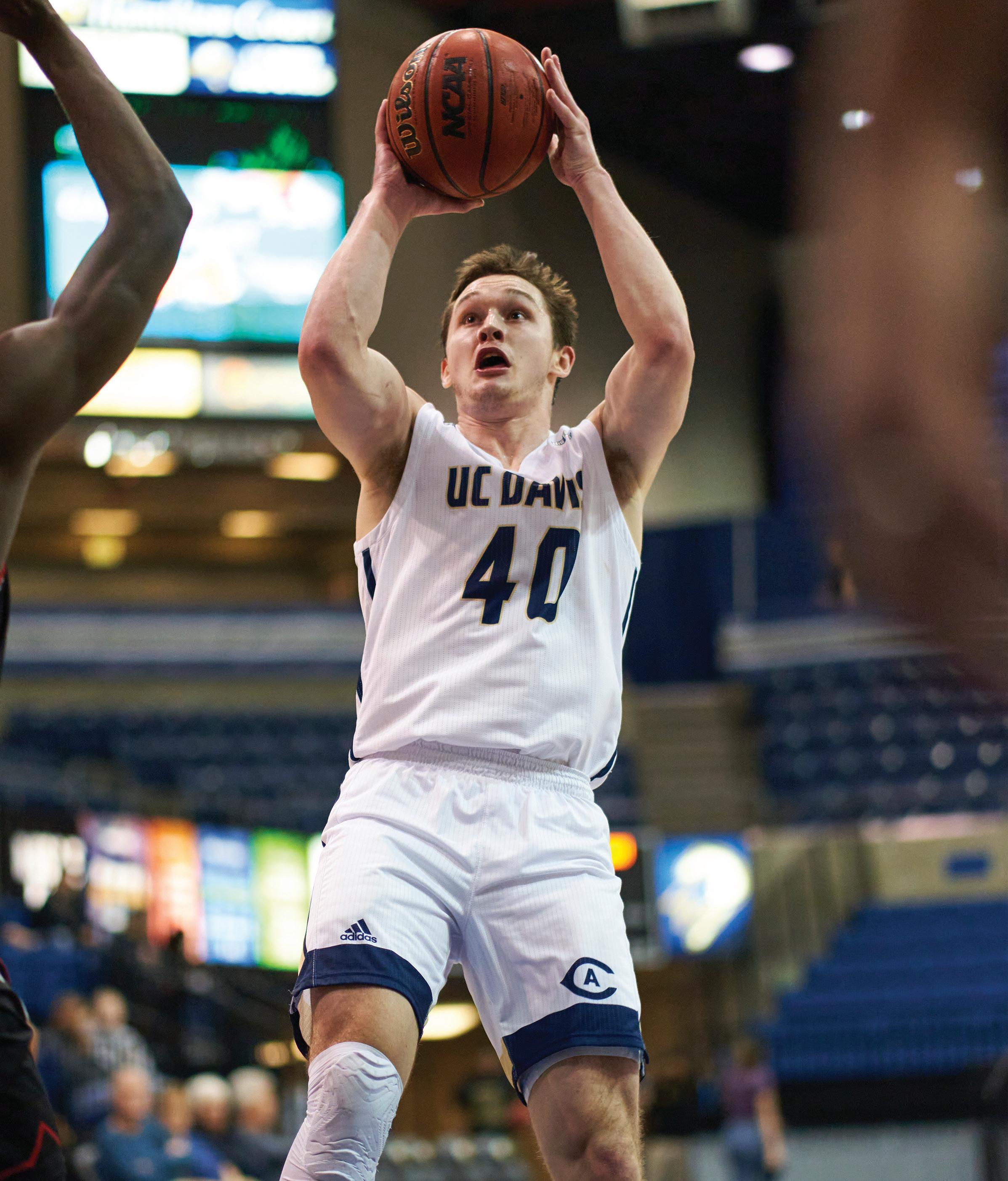
The half came to a close with UC Davis trailing 42-35. Pepper had 10 points along with four assists, and Anigwe had nine points. The Aggies shot 56% from beyond the 3-point line, compared to UC Irvine who shot 45% from the 3-point line. However, the Aggies committed 11 turnovers while the Anteaters only had seven. In addition, the Aggies were outrebounded 14-13. The bench was another area in which the Aggies were outplayed; UC Irvine’s bench outscored the home team,
14-8. UC Davis had trouble defending the paint as the Anteaters easily scored 16 points, compared to six points for the Aggies.
The second half was similar to the end of the first half, UC Irvine continued scoring and extended their lead to 12 points, 51-39.
Johnson kept the Aggies at bay, scoring 20 points in the second half. He shot 7-11 from the field and 5-6 from the free throw line. Another Aggie who had a big half was Pepper, scoring 17 points late in the half. Midway through the half, Pepper’s layup cut the deficit to one point.
However, UC Irvine’s offense was too much to overcome; they led by as many as 16 points in the final minutes of regulation. Pepper scored back to back 3-pointers in the final seconds of the game, but it was too late as the Anteaters grabbed a road win.
Pepper finished with an impressive 27 points and seven assists, and his teammate Johnson finished with 25 points, while Anigwe had solid spurts throughout the game, scoring 13 points and grabbing five rebounds. Secondyear center Bent Leuchten dominated the paint, adding 31 points in 19 minutes.
In the end, UC Davis committed 17 turnovers, leading to 27 points for UC Irvine. Although the Aggies outrebounded the Anteaters 30-29, they were outplayed in the paint as UC Irvine scored 38 points, compared to UC Davis’ 22 points.
The Aggies fall to 7-7 overall and 0-2 in the Big West Conference. With the loss, the Aggies fall to 10th place in the Big West.
After starting the season 6-2, along with beating UC Berkeley for the first time in program history, UC Davis has lost four games in a row and are struggling defensively. They rank 11th on defense in the conference. However, the Aggies are the second top ranked offense, with Pepper leading the Big West in scoring with 20 points per game and Johnson averaging 16.4 points, good for sixth-place.
Since Manjon’s departure, Pepper has stepped up as the leader of the team. His statistical numbers have improved from last season, where he averaged
The season is still young, and they can still turn their season around, but they must come together collectively as a group and give better effort defensively.
Pepper and the Aggies will look to
SPORTS 12 | THURSDAY, JANUARY 12, 2023 THE CALIFORNIA AGGIE
BASEBALL
MLB stars including Aaron Judge and Jacob deGrom receive huge contracts during free agency
MEN’S BASKETBALL
Elijah Pepper of the UC Davis men’s basketball team in action. (Aggie File / 2020)
15.1 points per game. The addition of Johnson has also turned UC Davis into a scoring powerhouse in the Big West; however, their defense has regressed. Last season, the Aggies ranked fifth.
rebound and attempt to get their first conference win of the season against ninth place CSU Bakersfield (1-2 in conference play) on Jan. 7 at the University Credit Union Center.
KELLIE LU / AGGIE












 BY LILY FREEMAN campus@theaggie.org
BY LILY FREEMAN campus@theaggie.org








 BY CLAIRE SCHAD cfschad@ucdavis.edu
BY CLAIRE SCHAD cfschad@ucdavis.edu
 BY VIVI KIM arts@theaggie.org
BY VIVI KIM arts@theaggie.org


 BY CLARA FISCHER arts@theaggie.org
BY CLARA FISCHER arts@theaggie.org











 BY LIDYA SHCHERBAKOVA lvshcherbakova@ucdavis.edu
BY LIDYA SHCHERBAKOVA lvshcherbakova@ucdavis.edu



